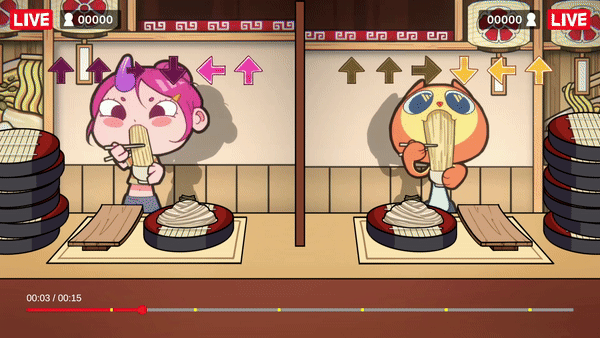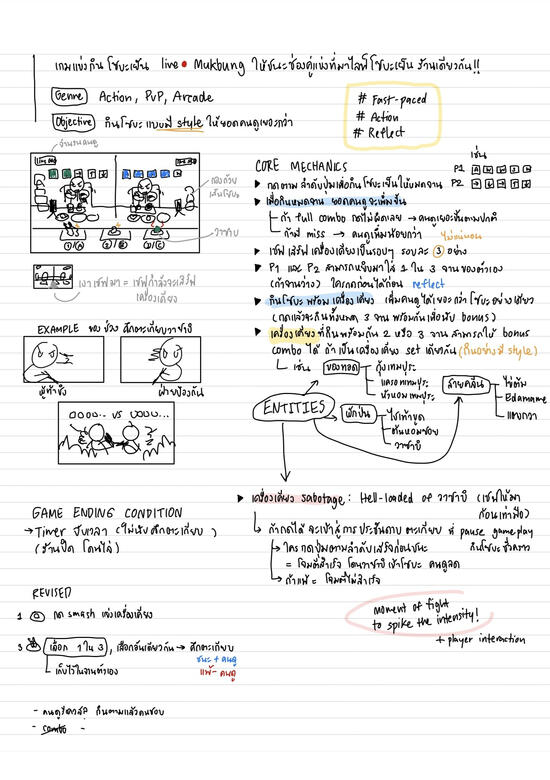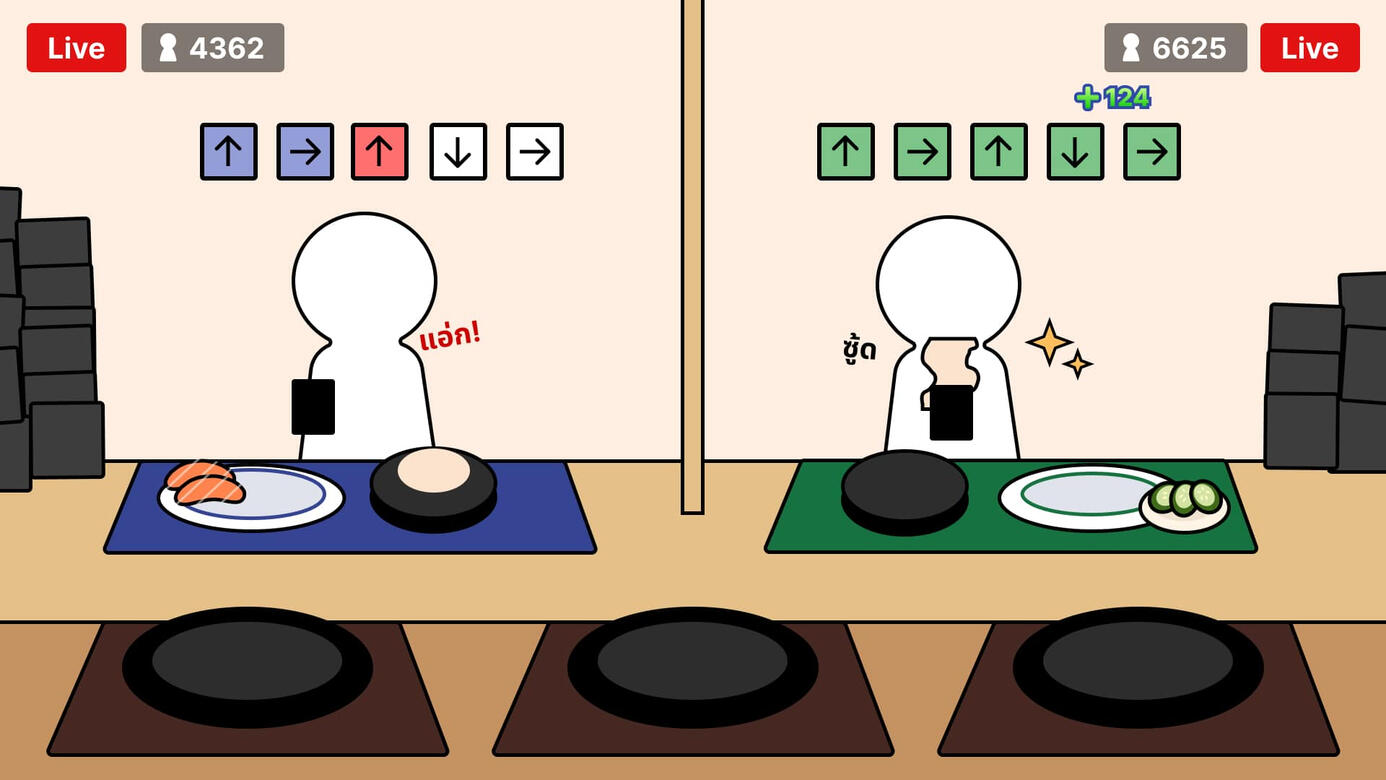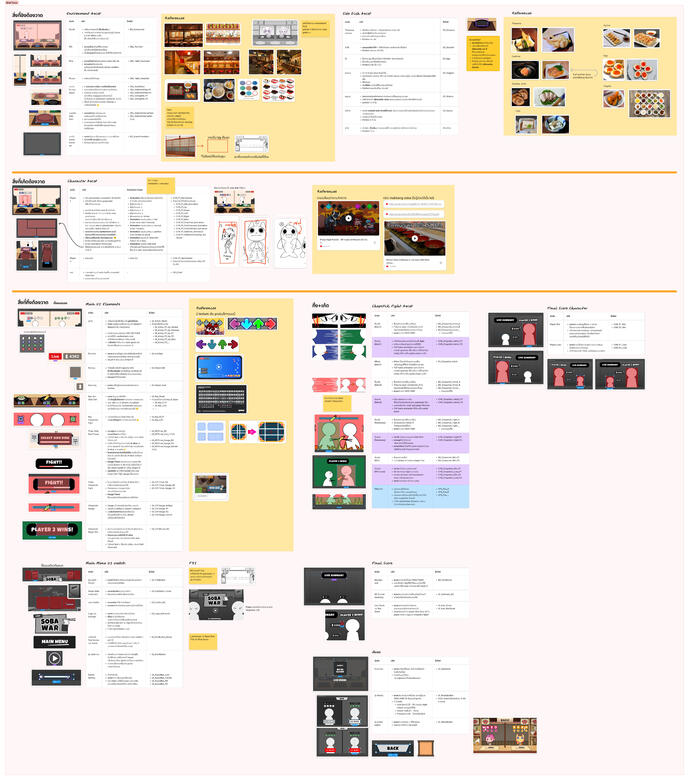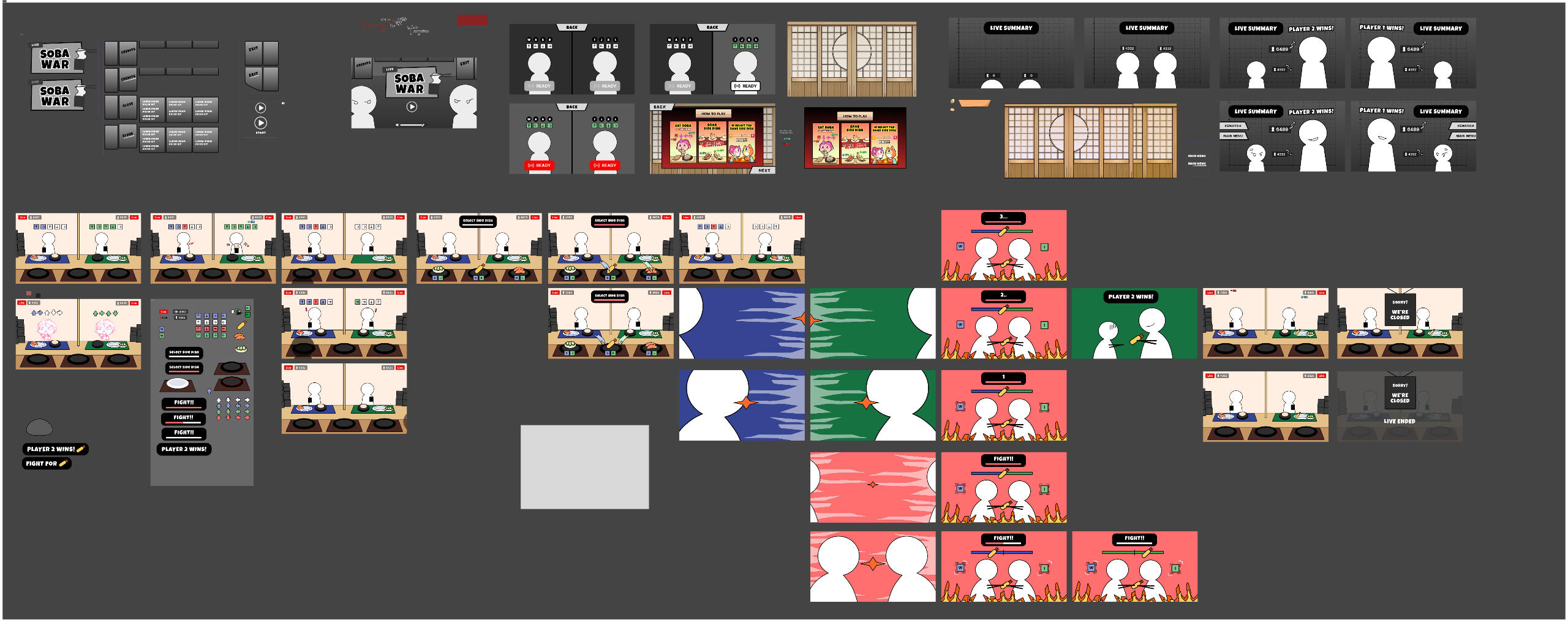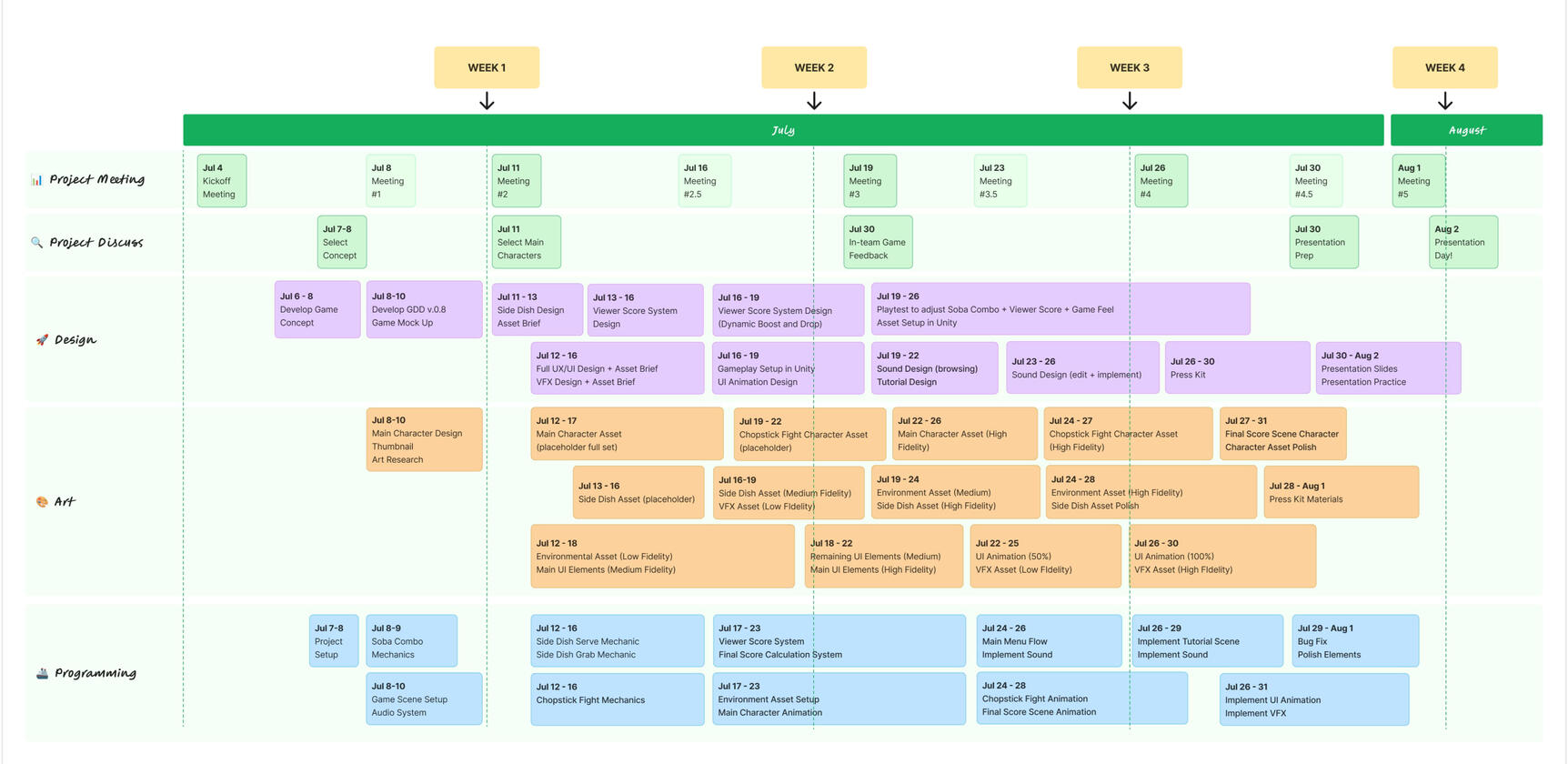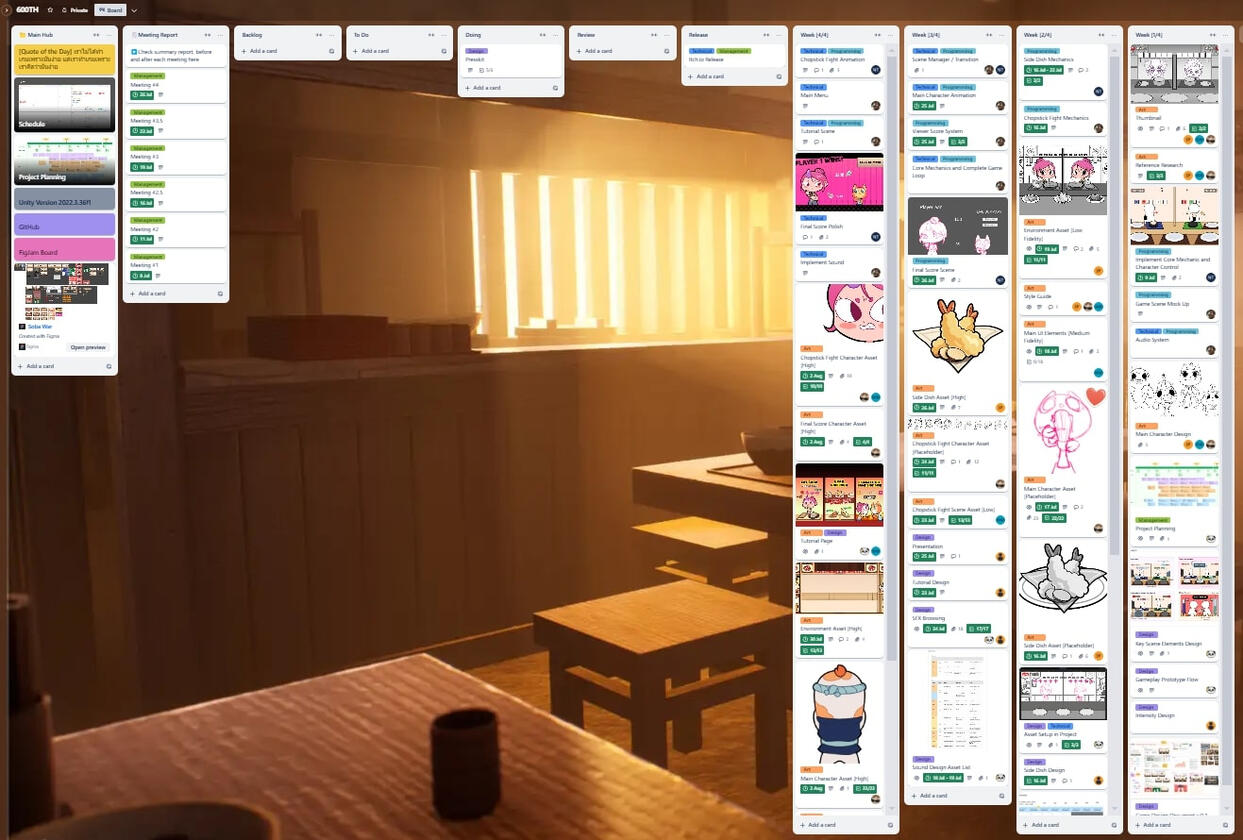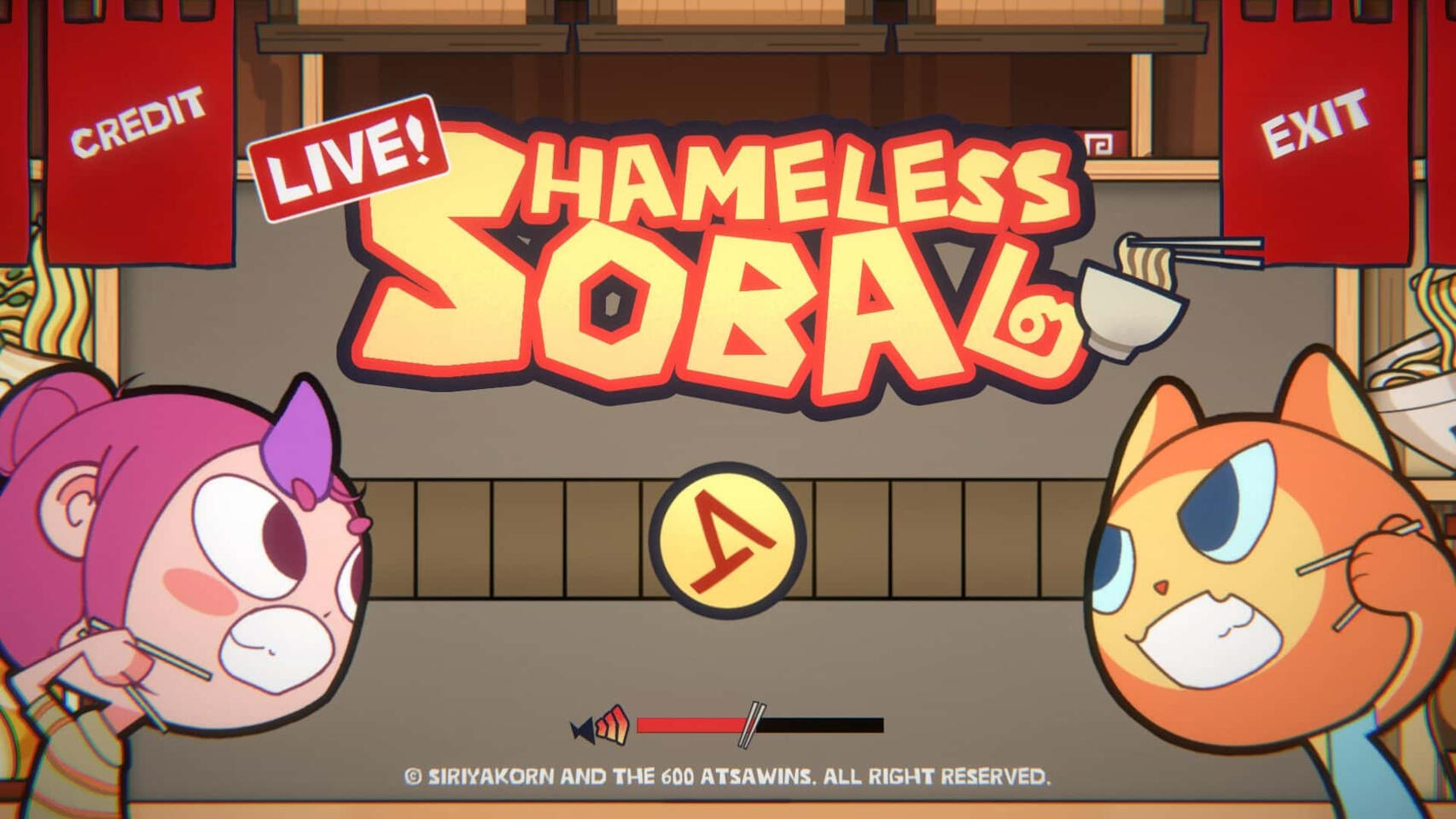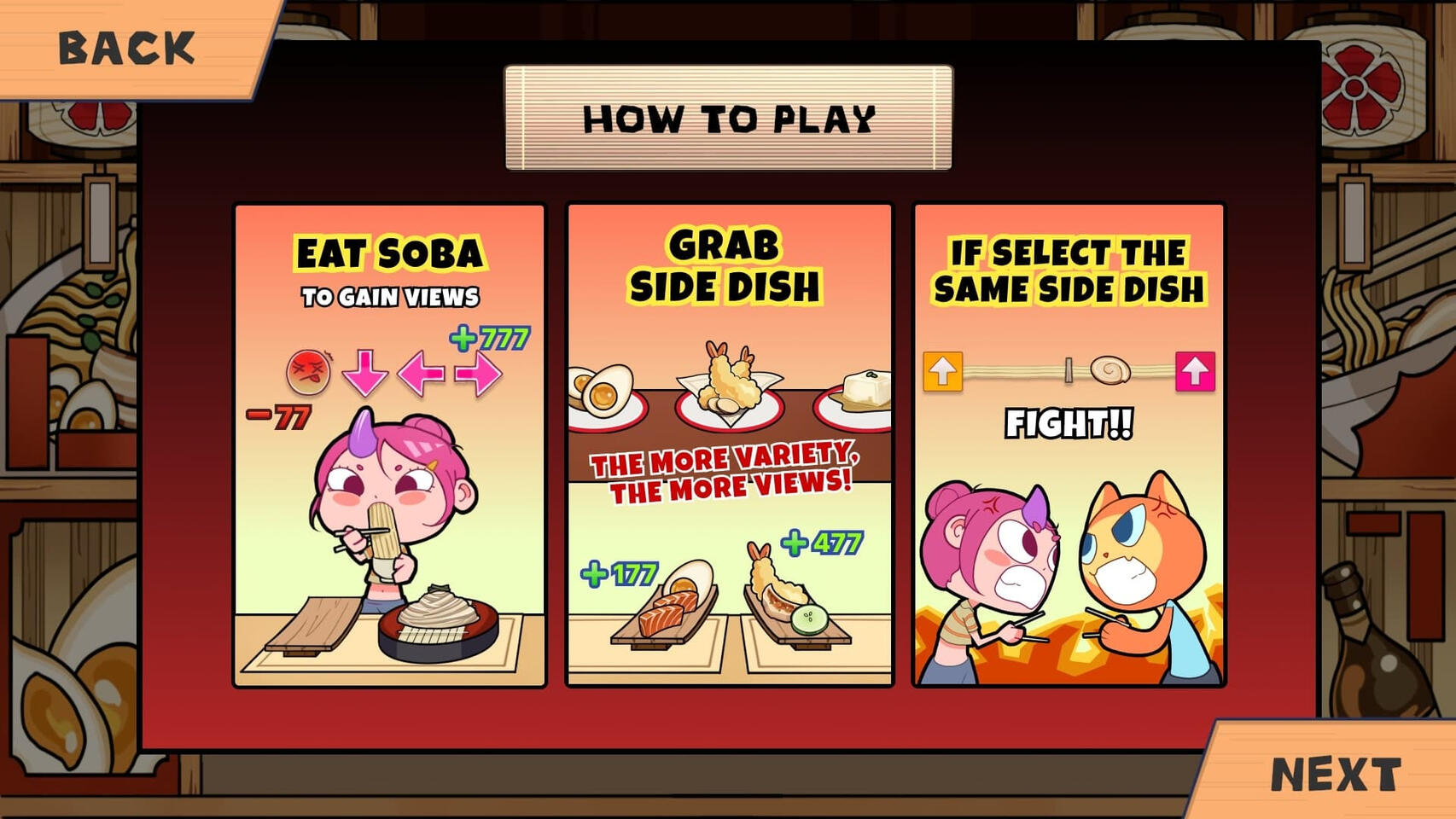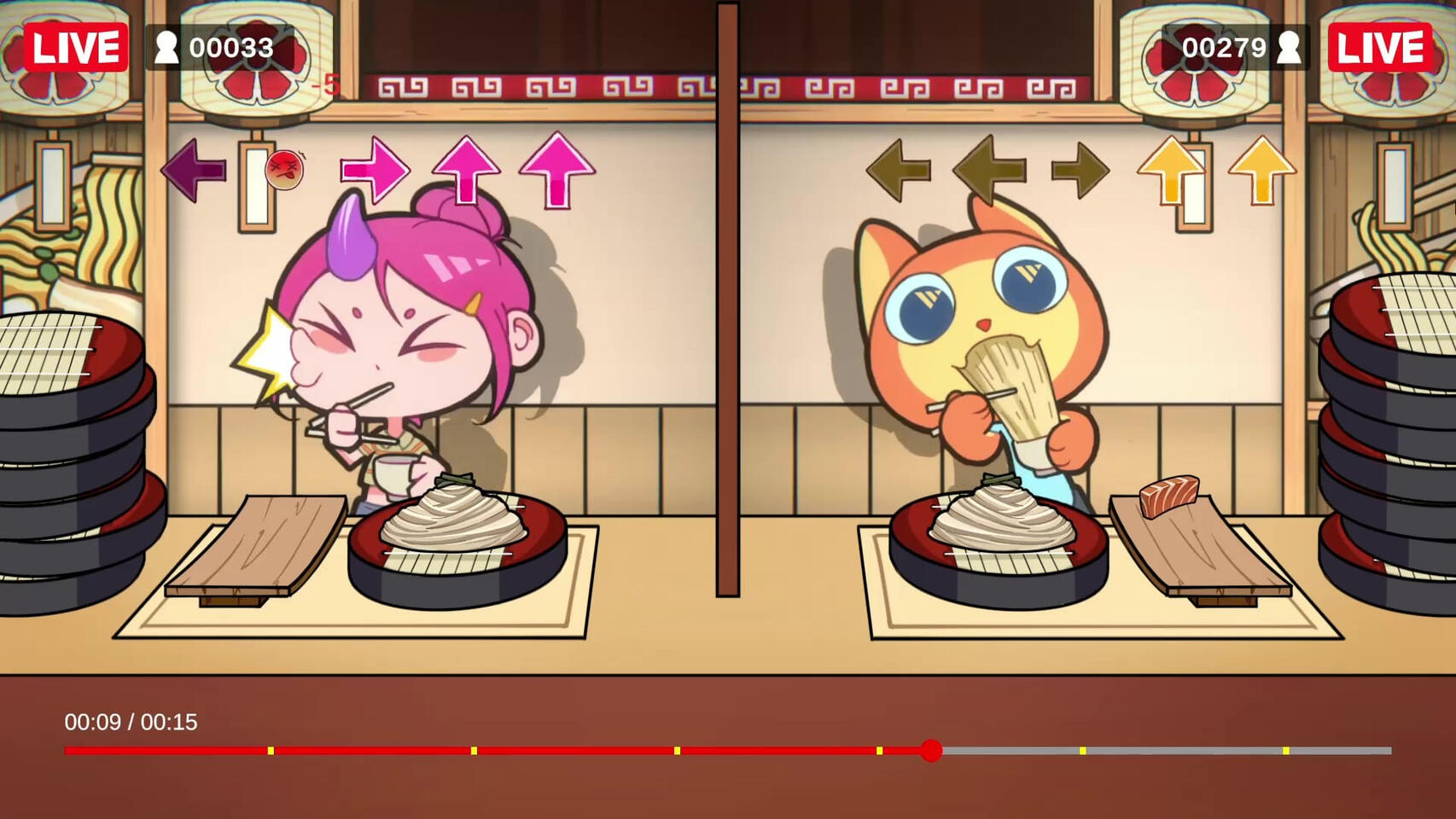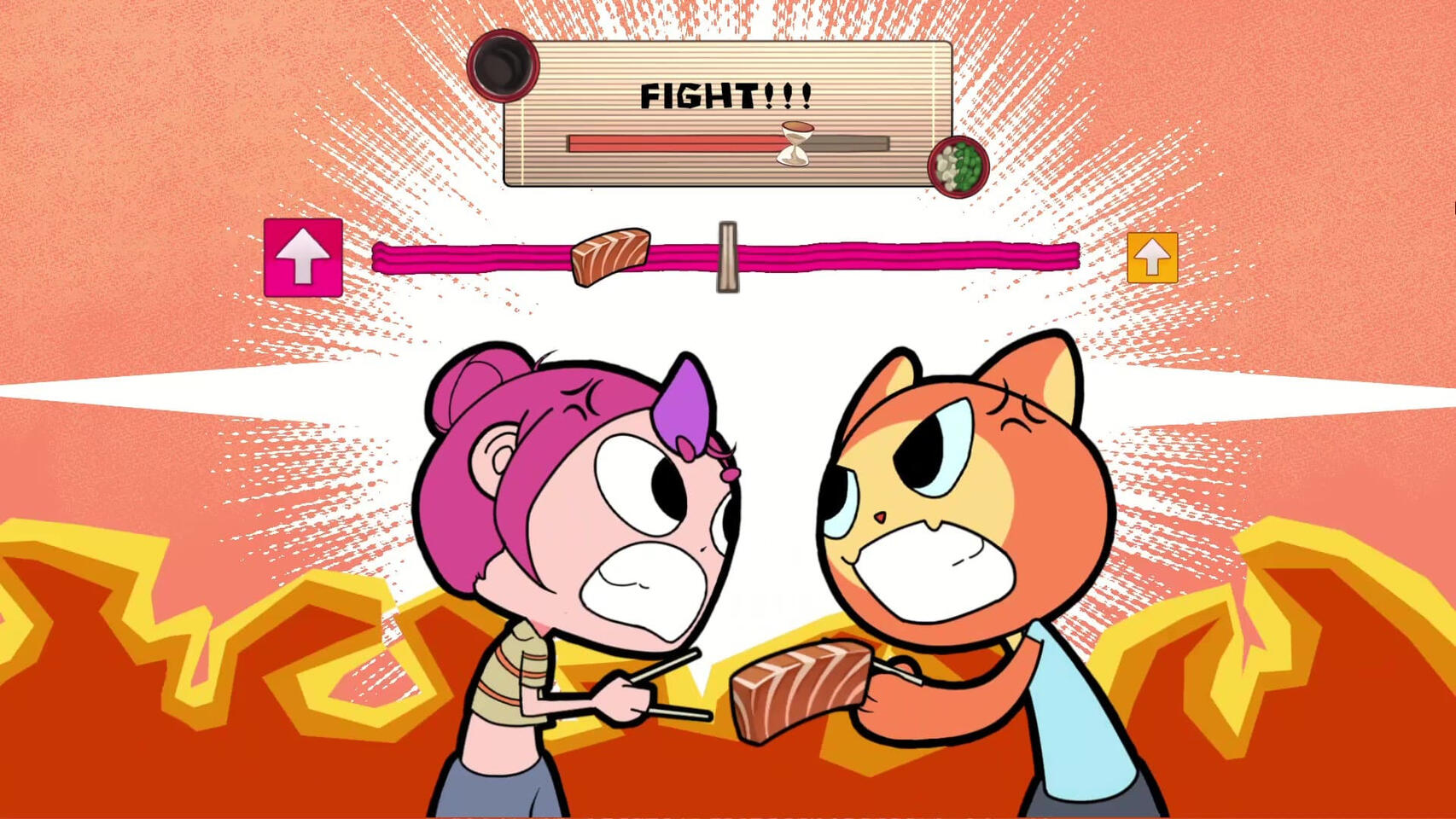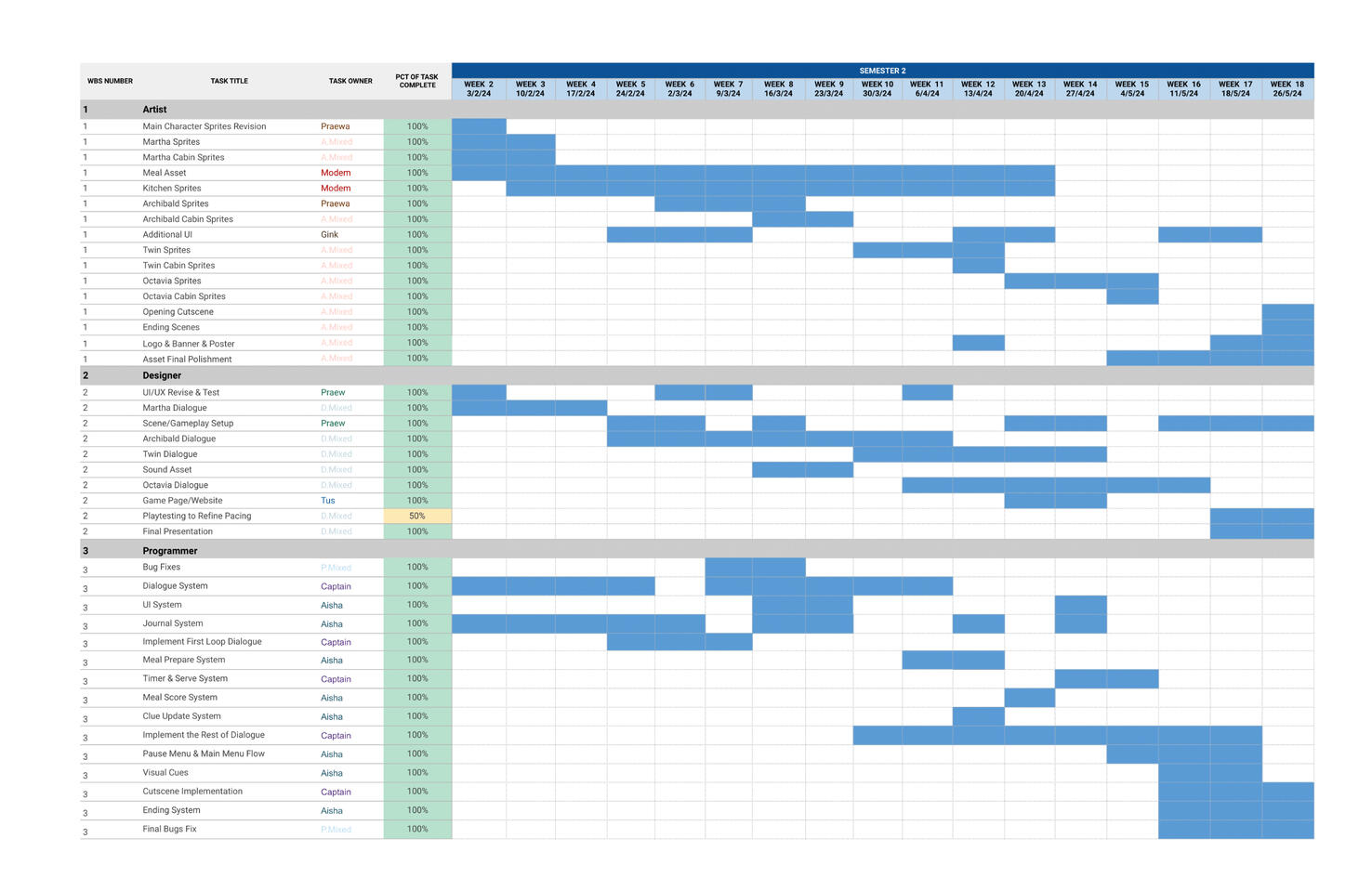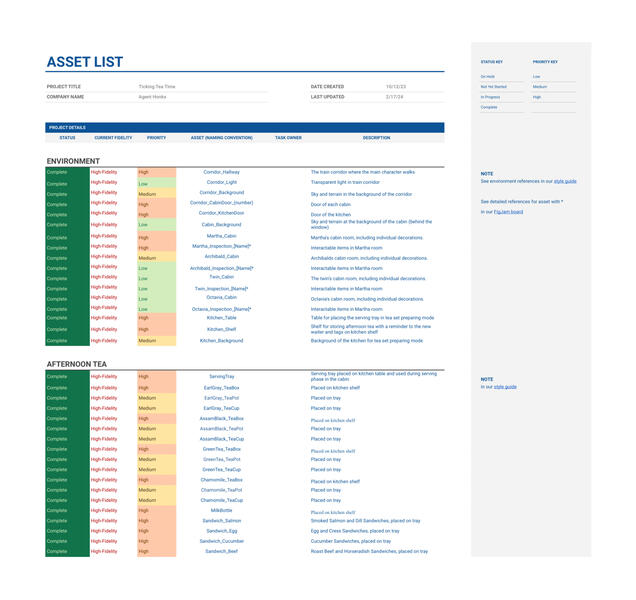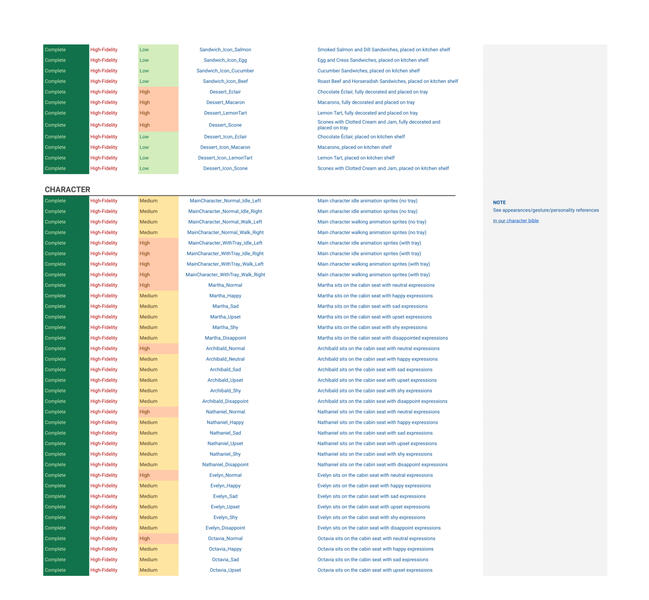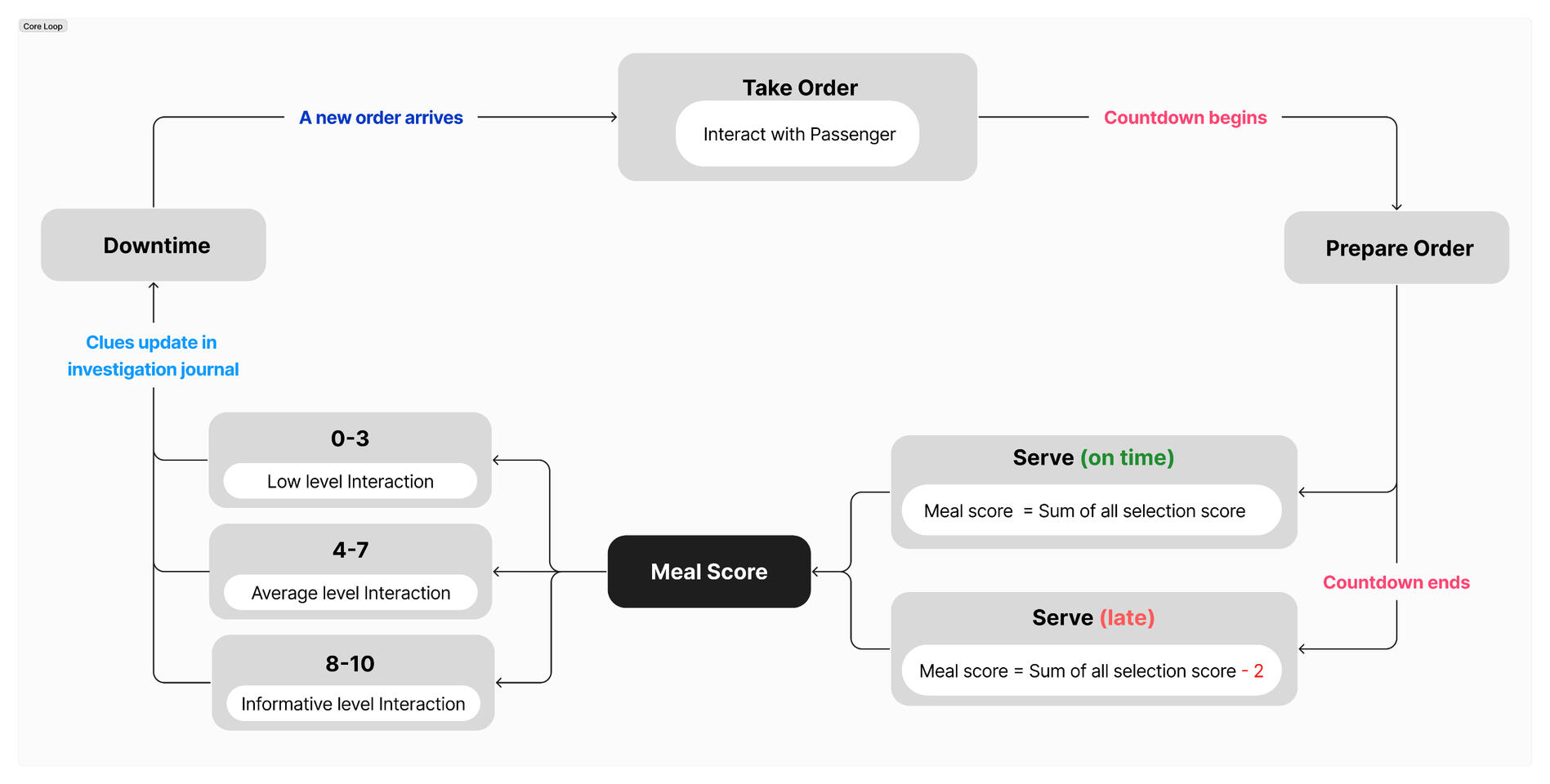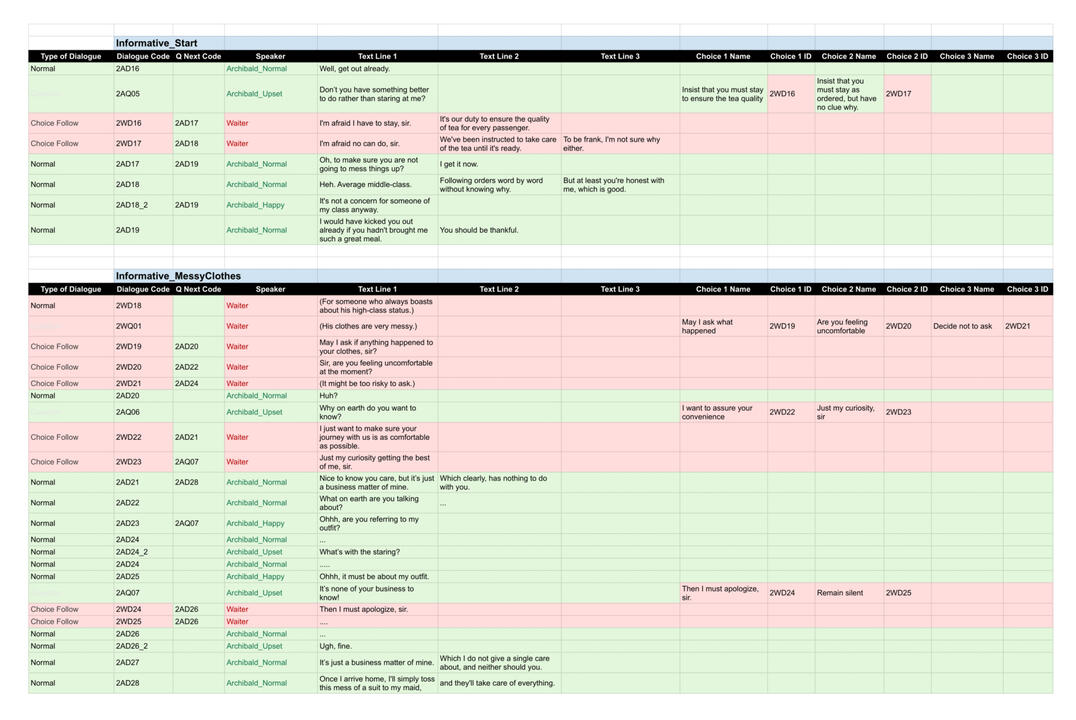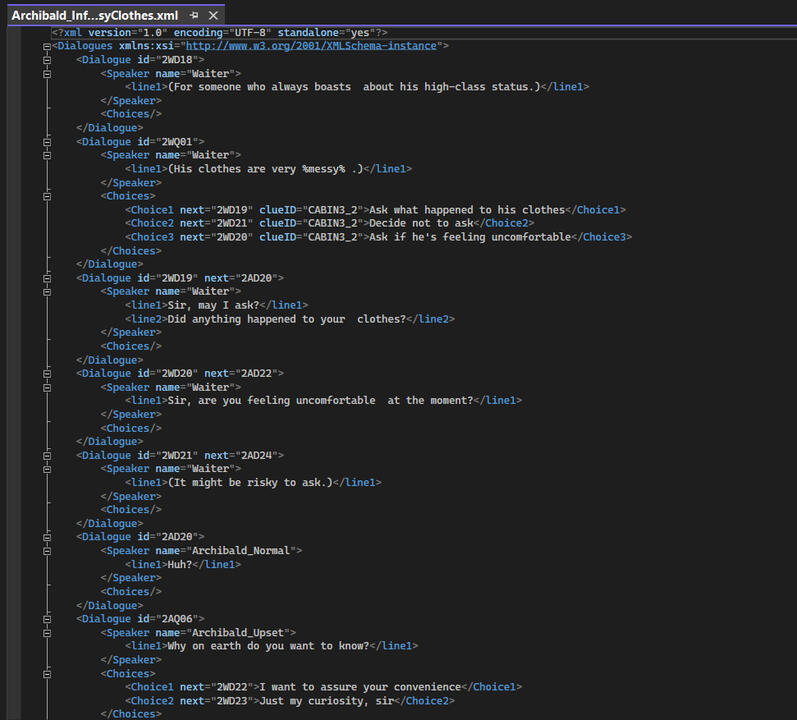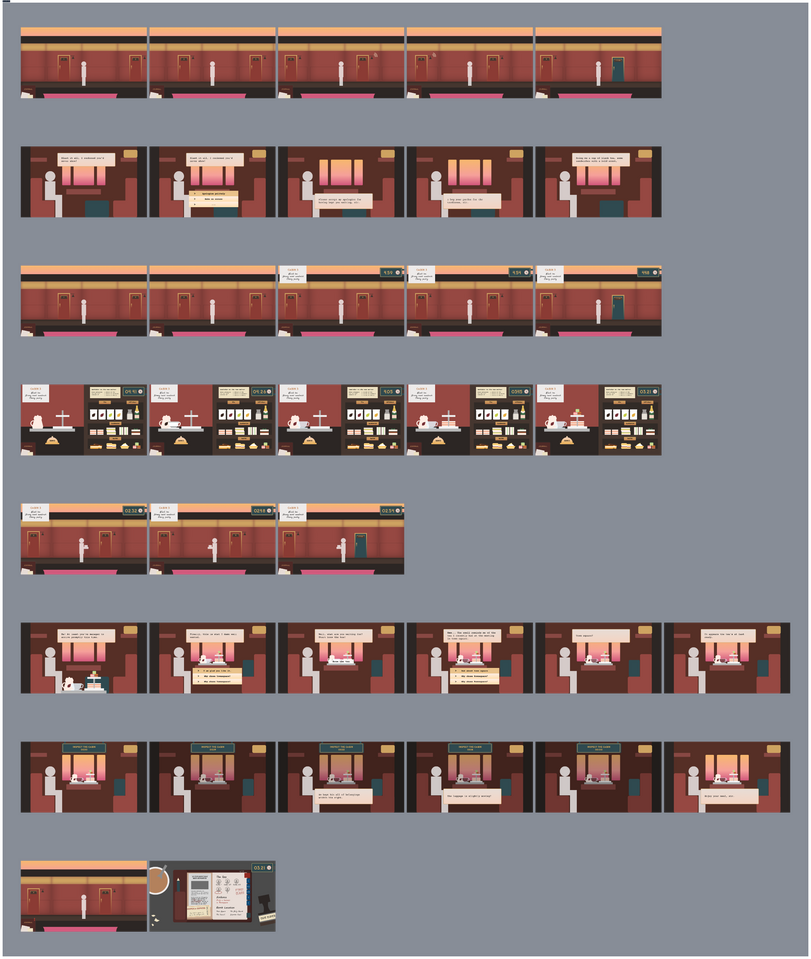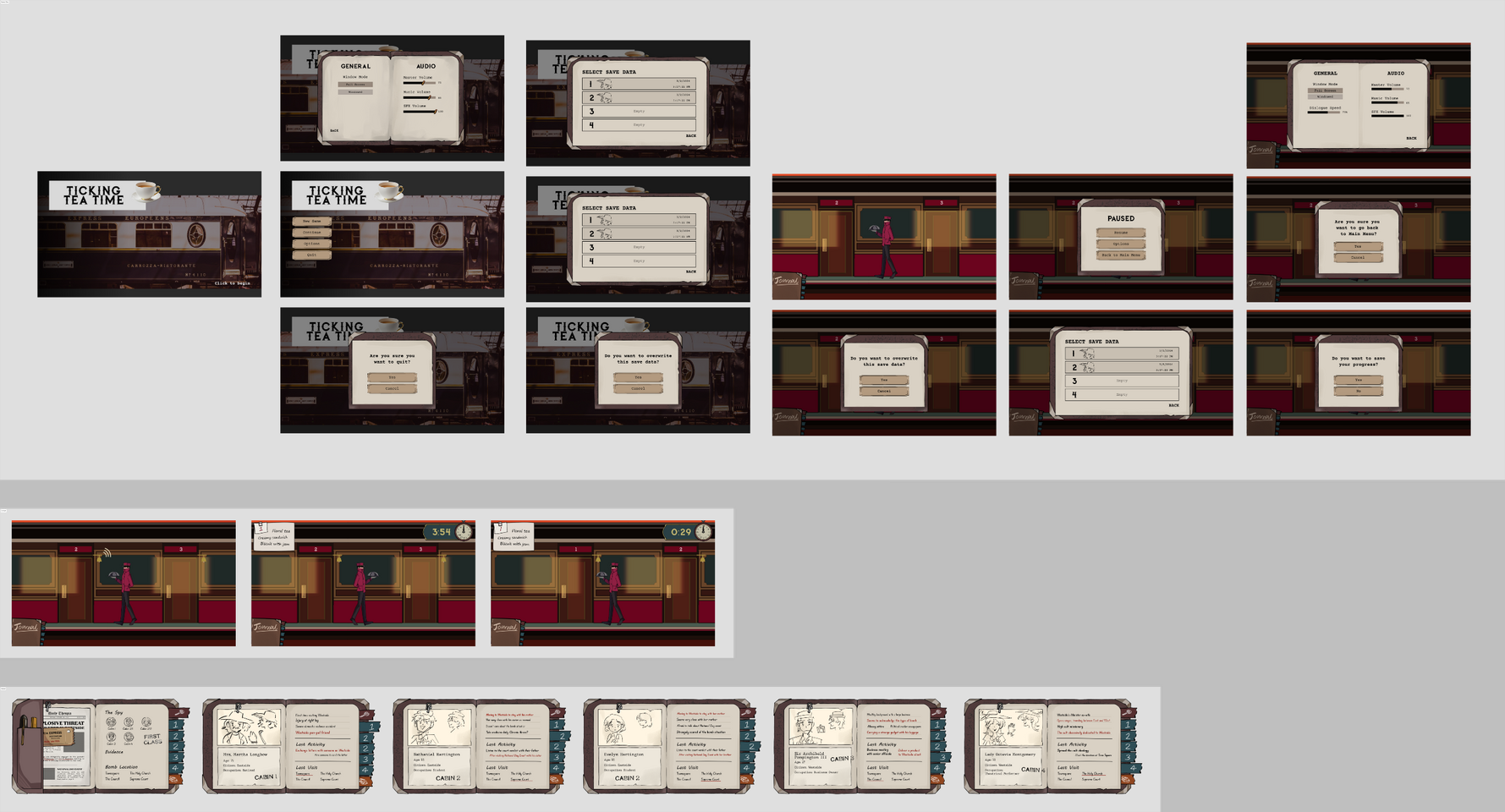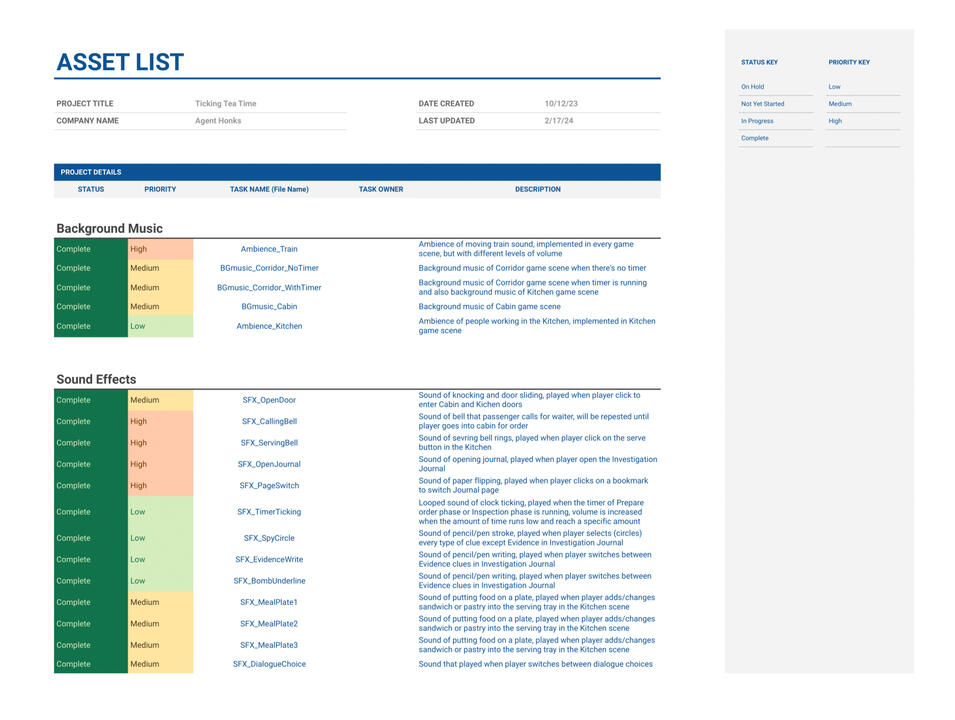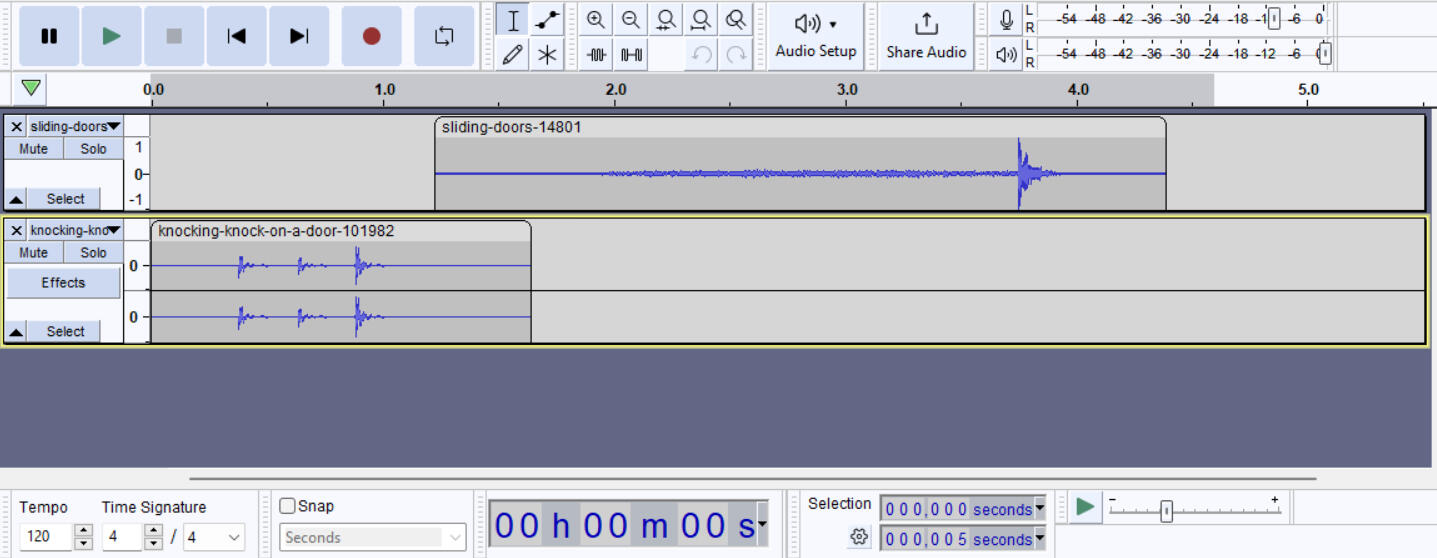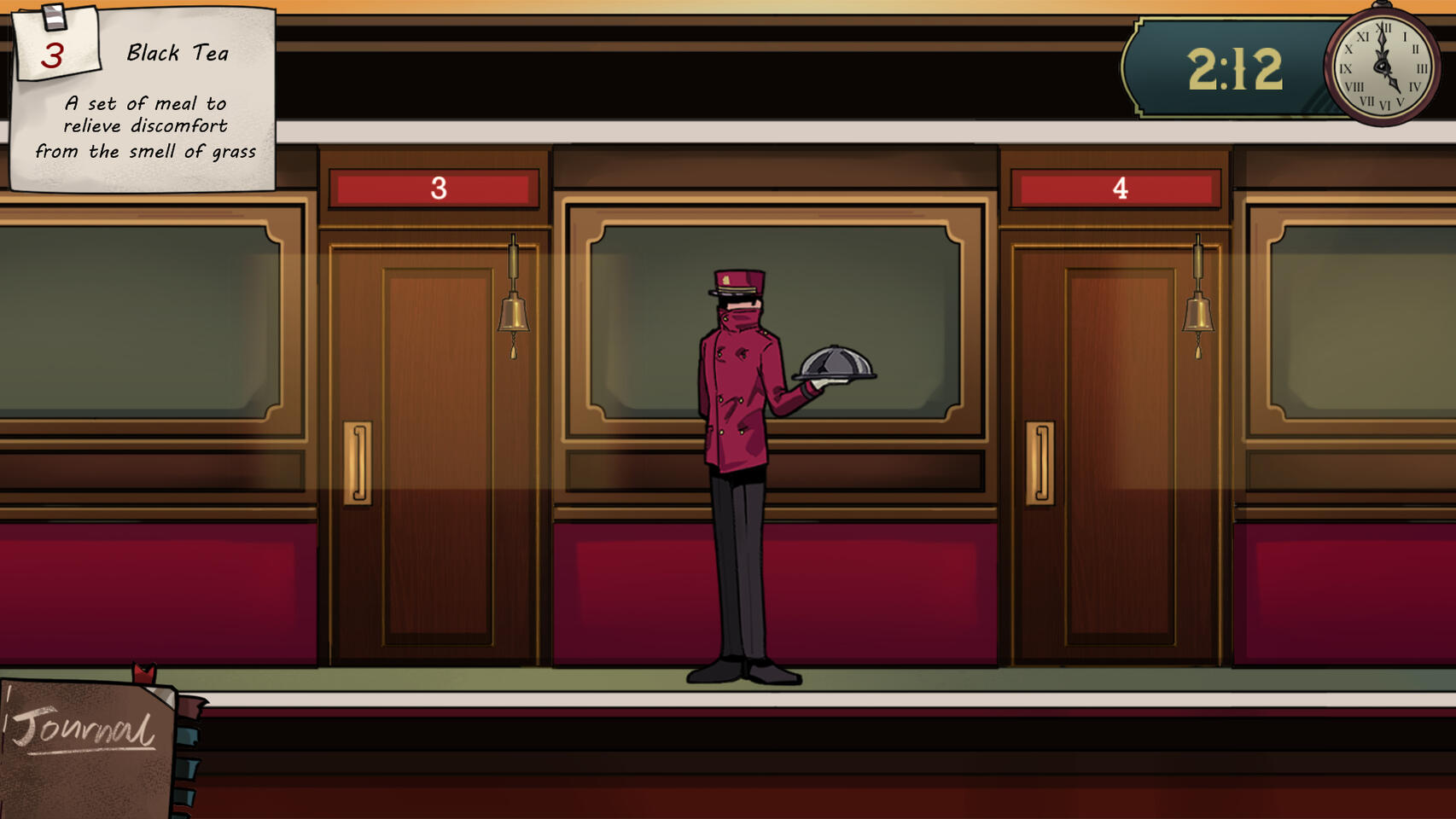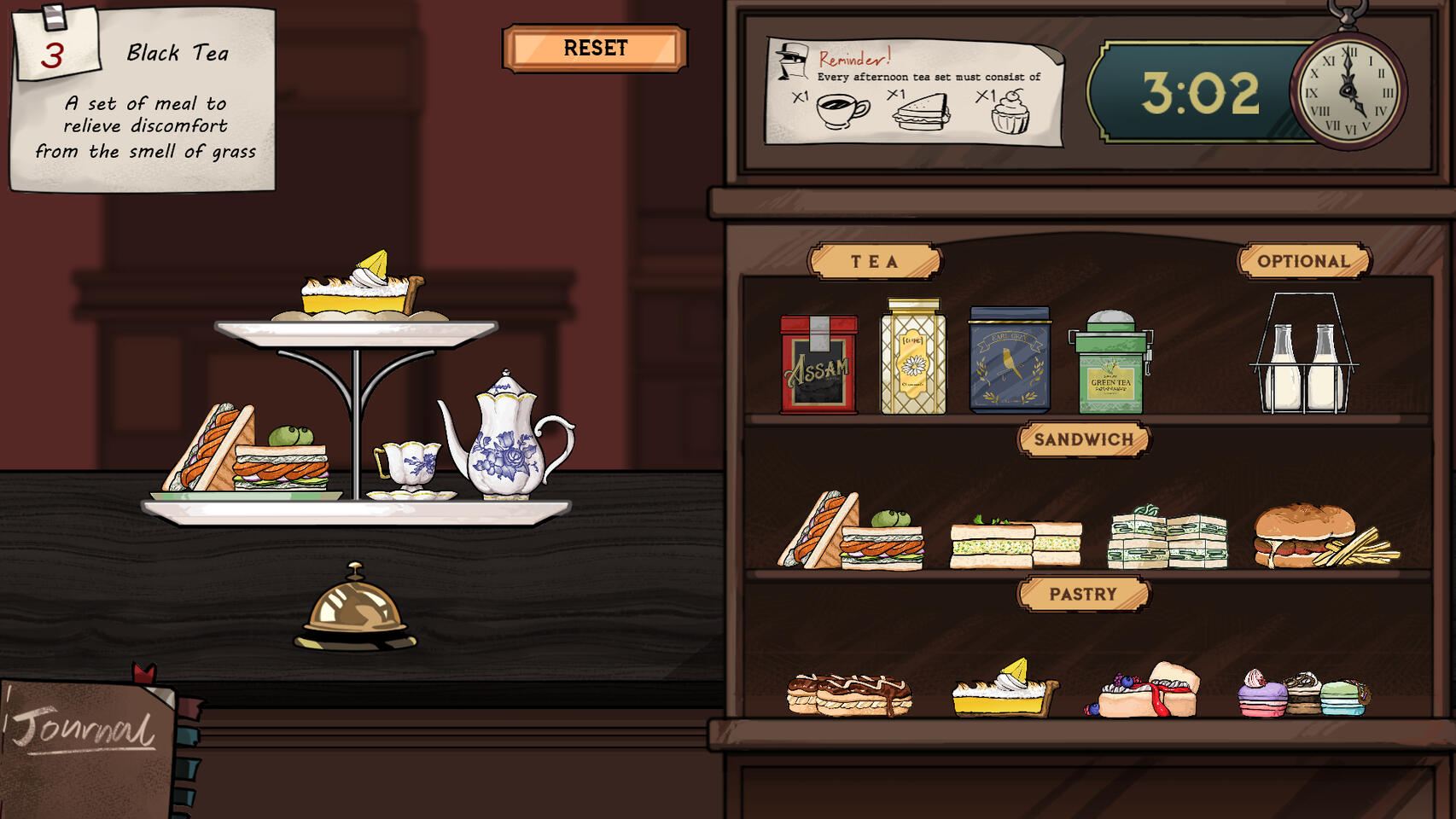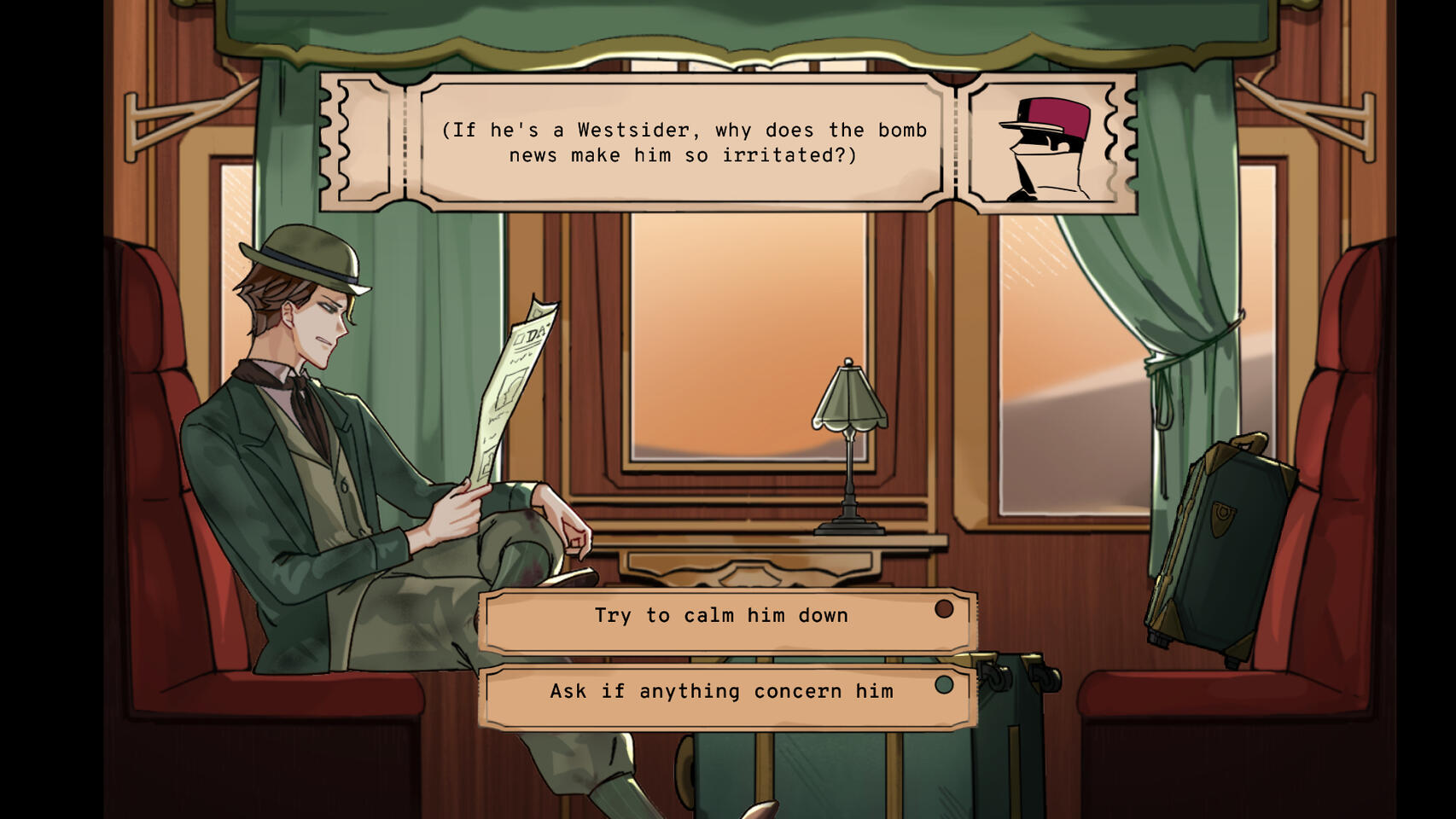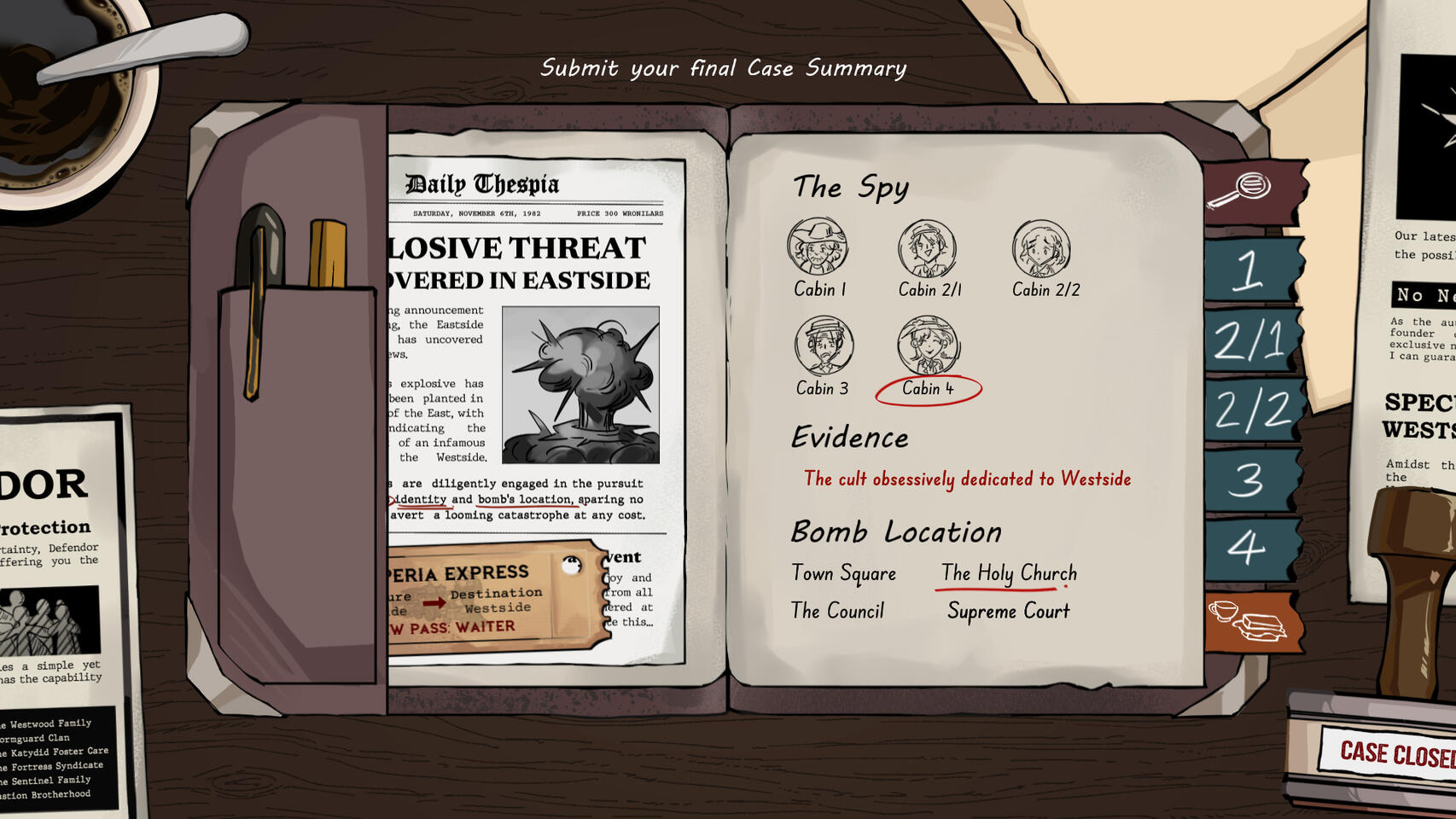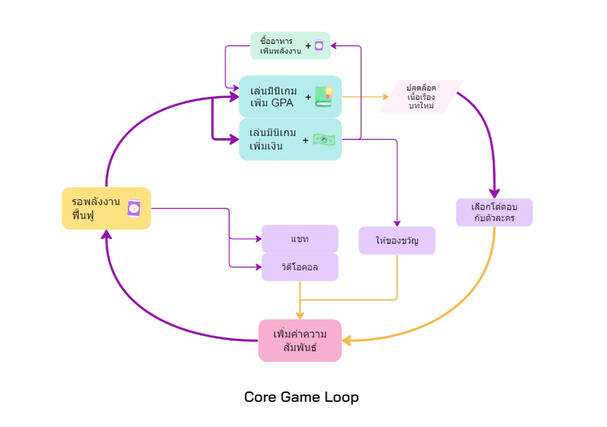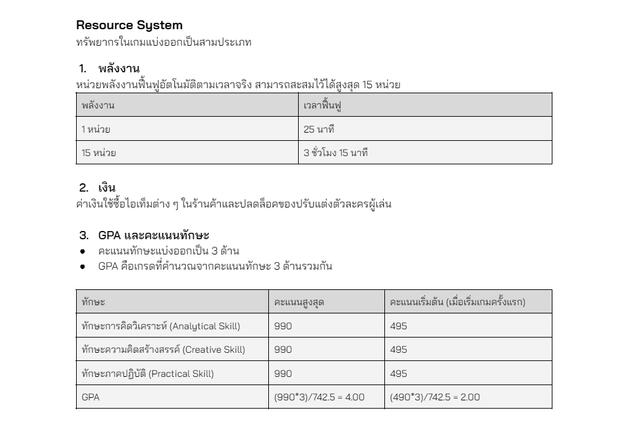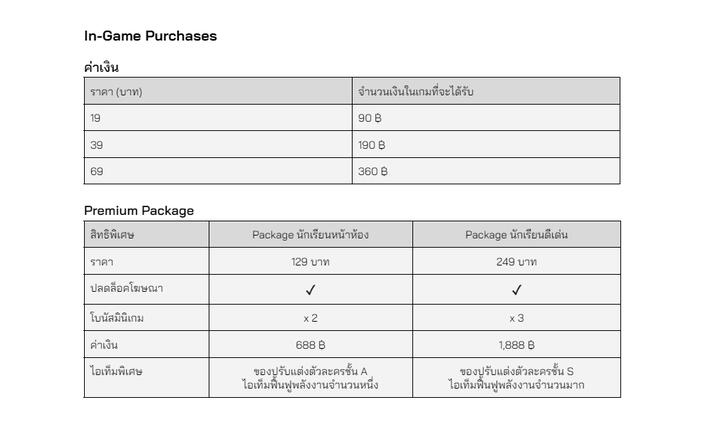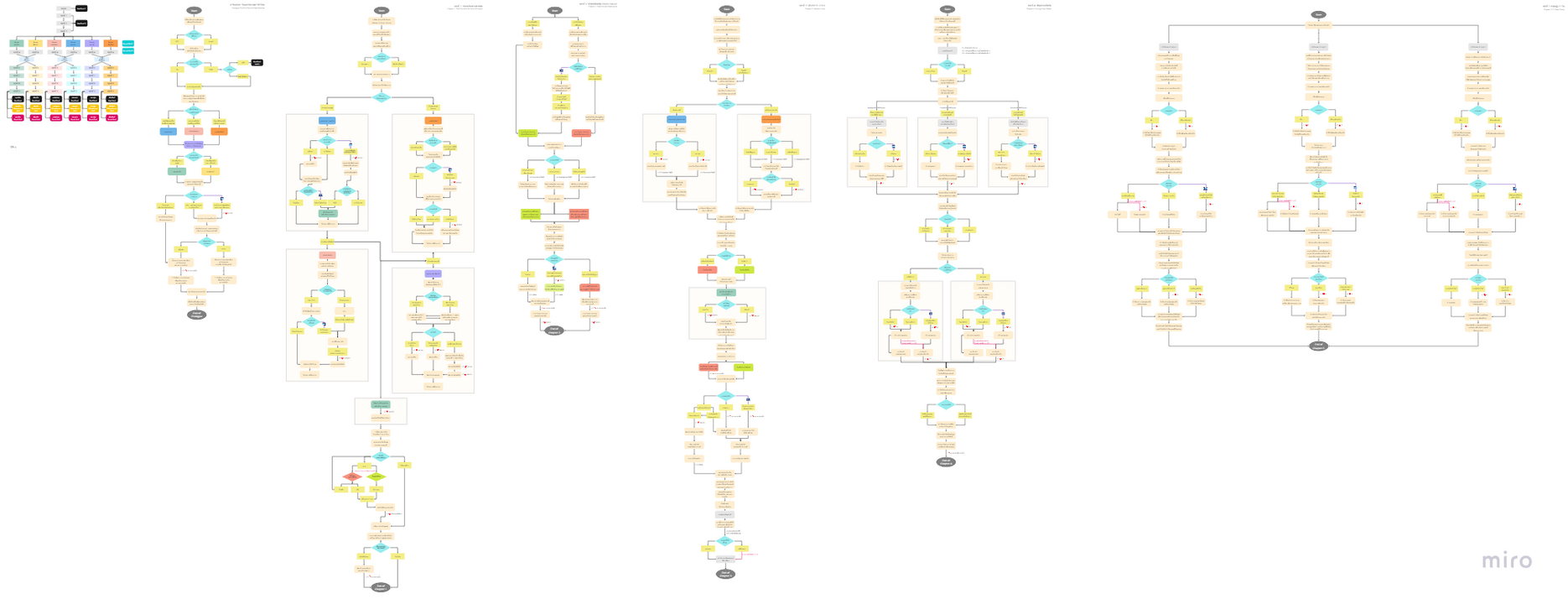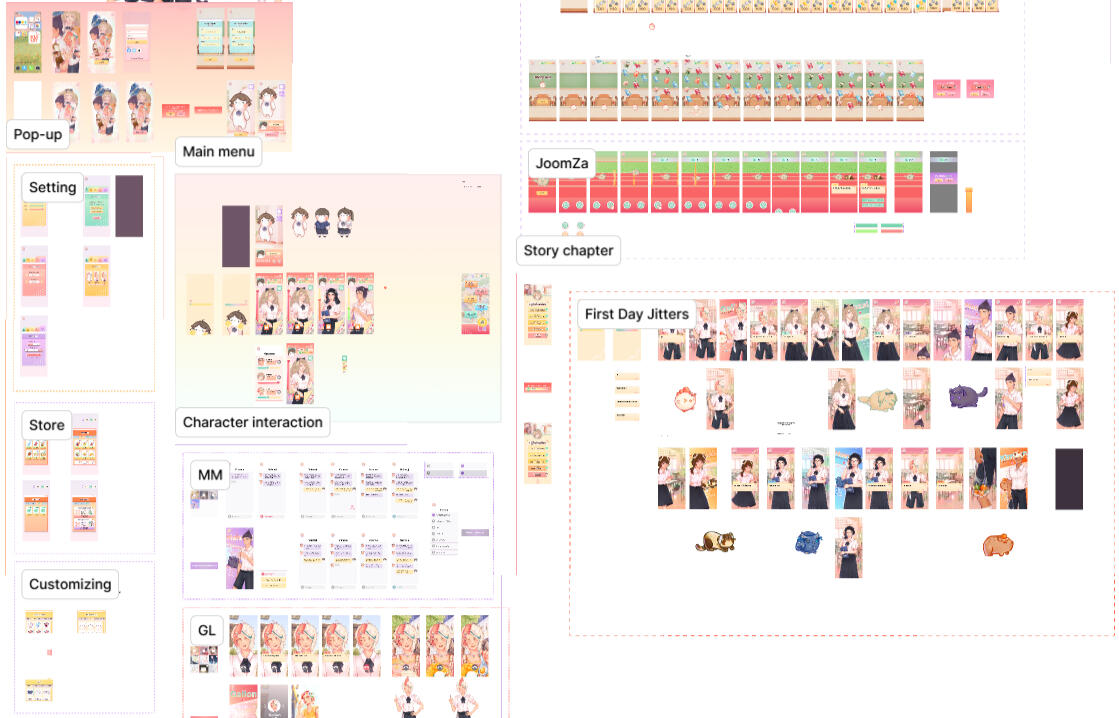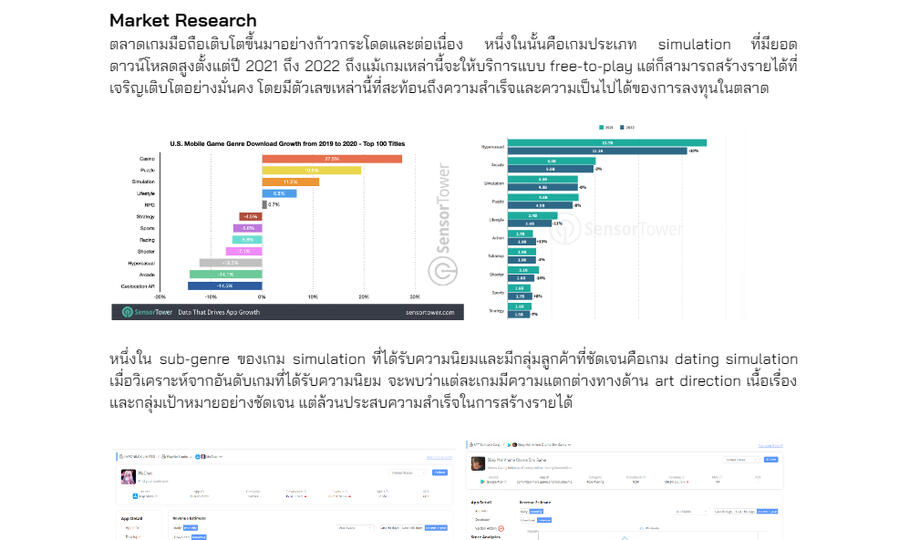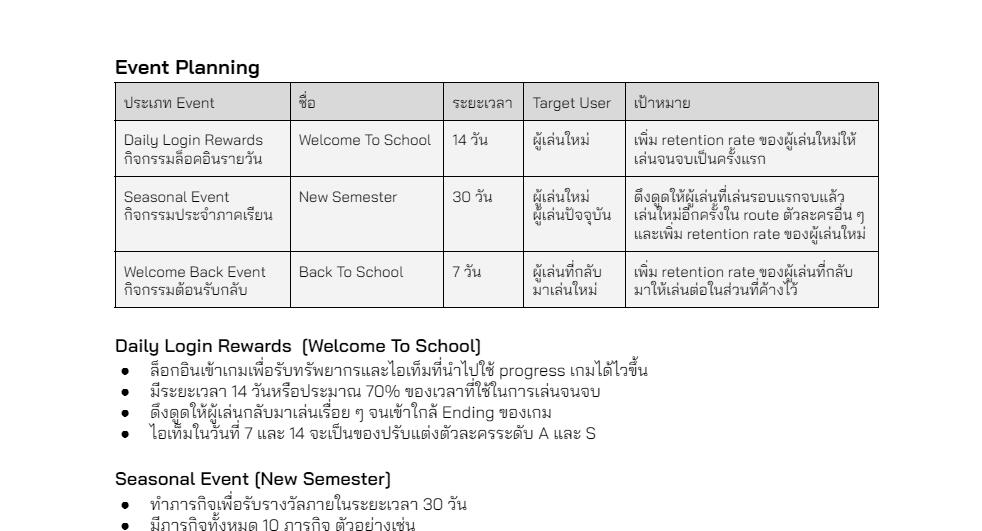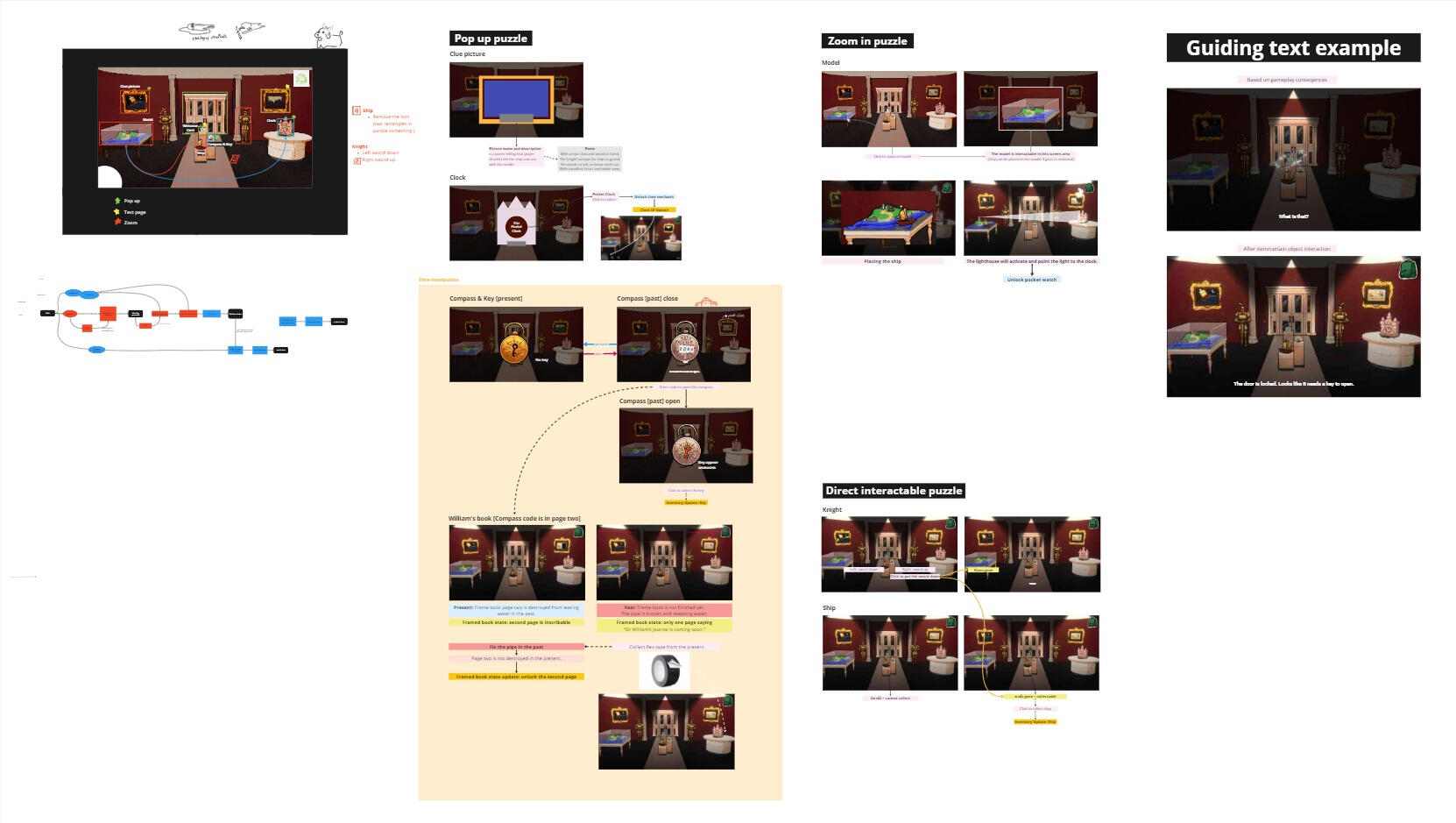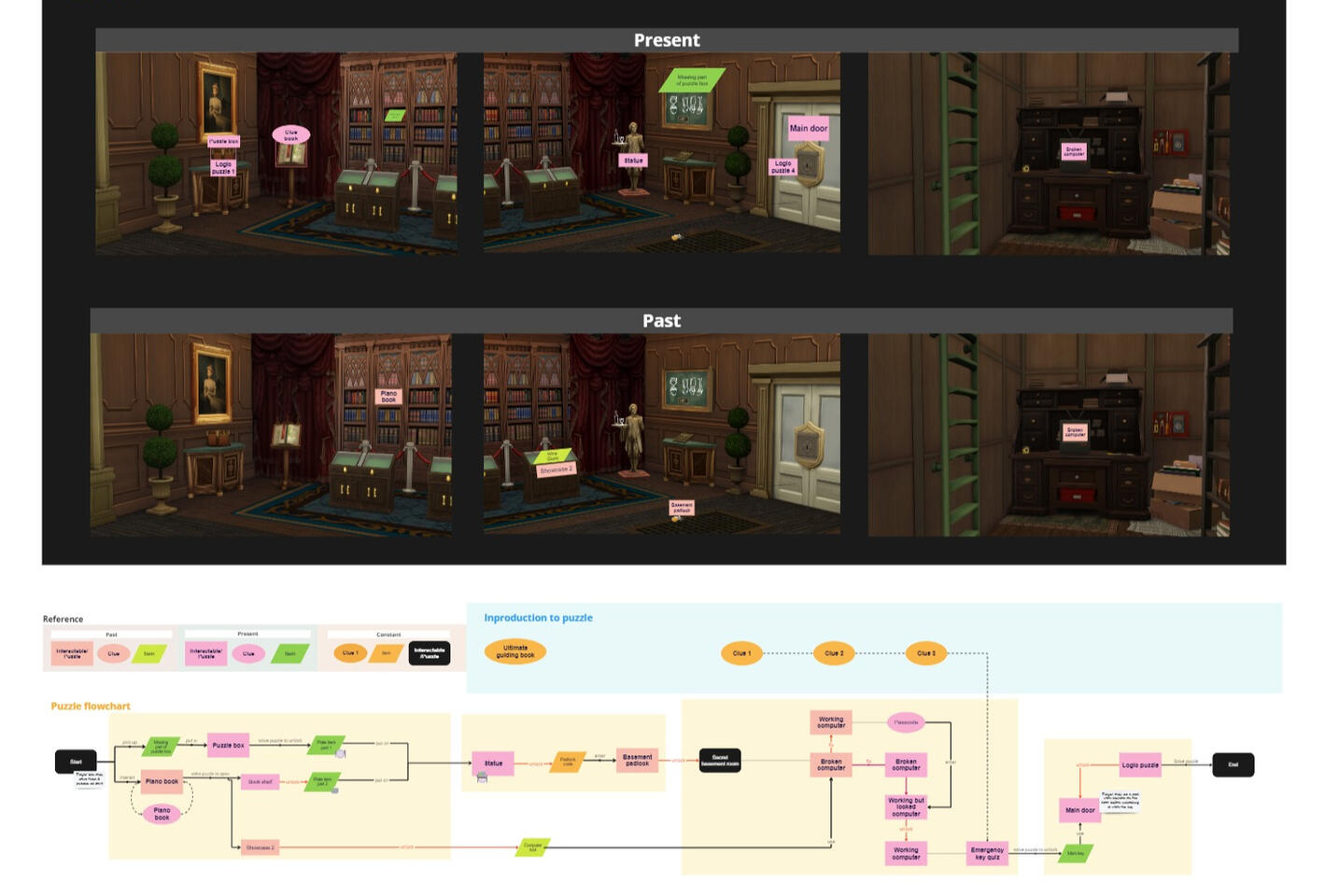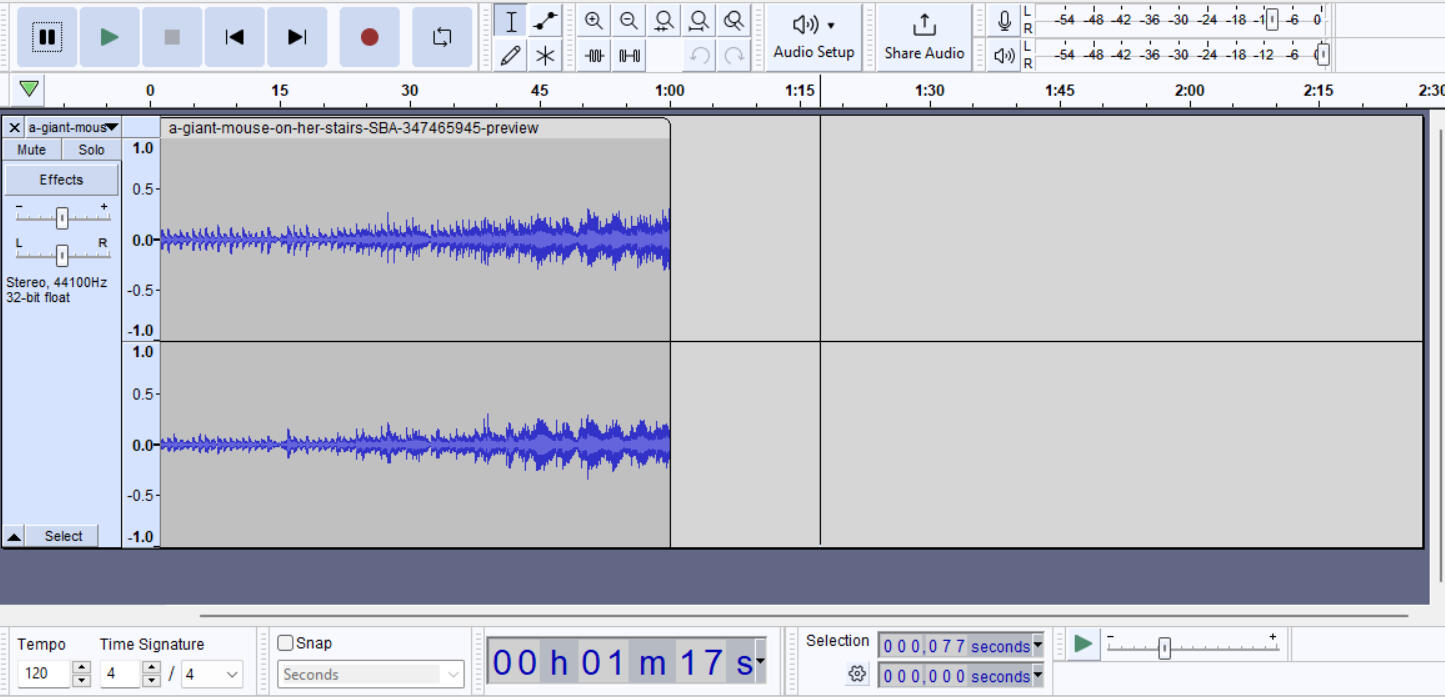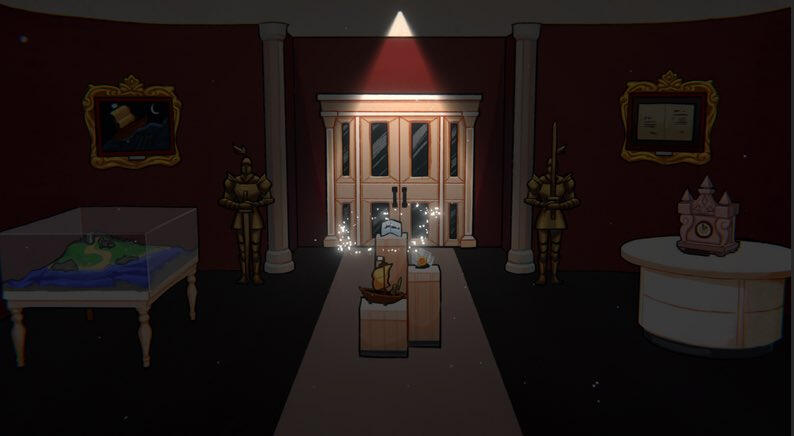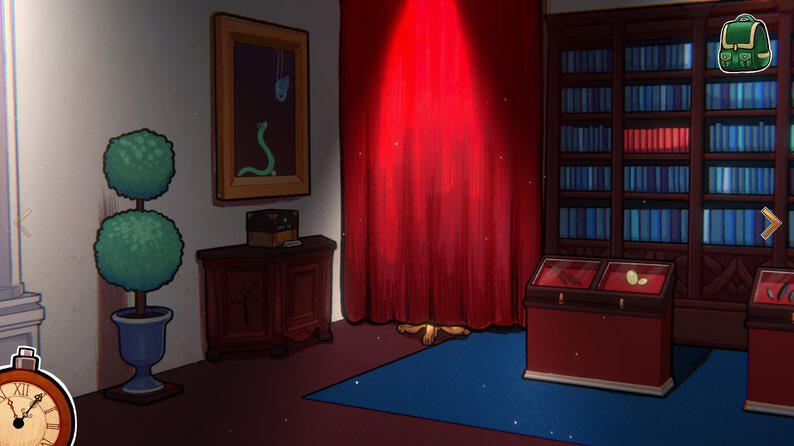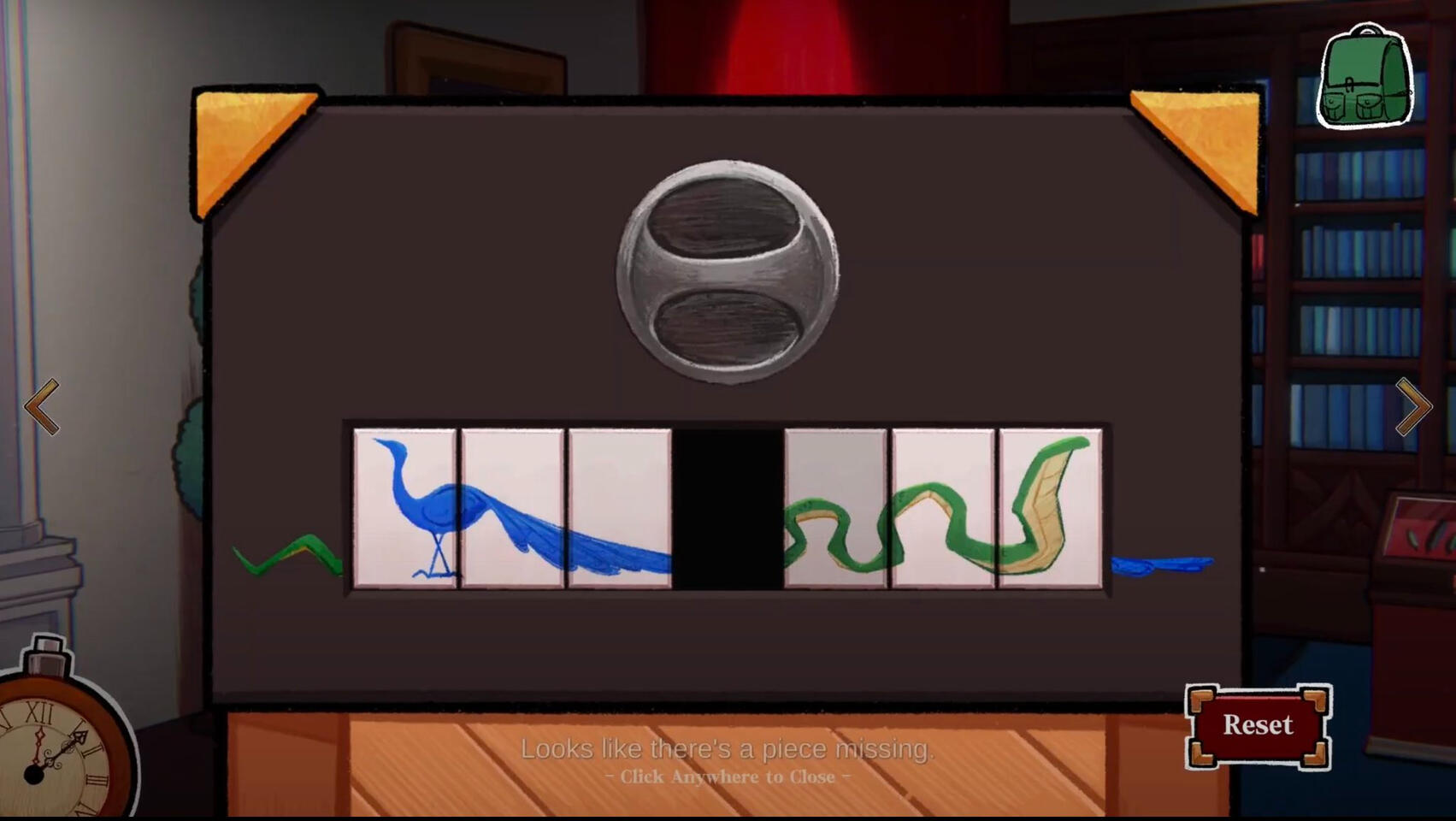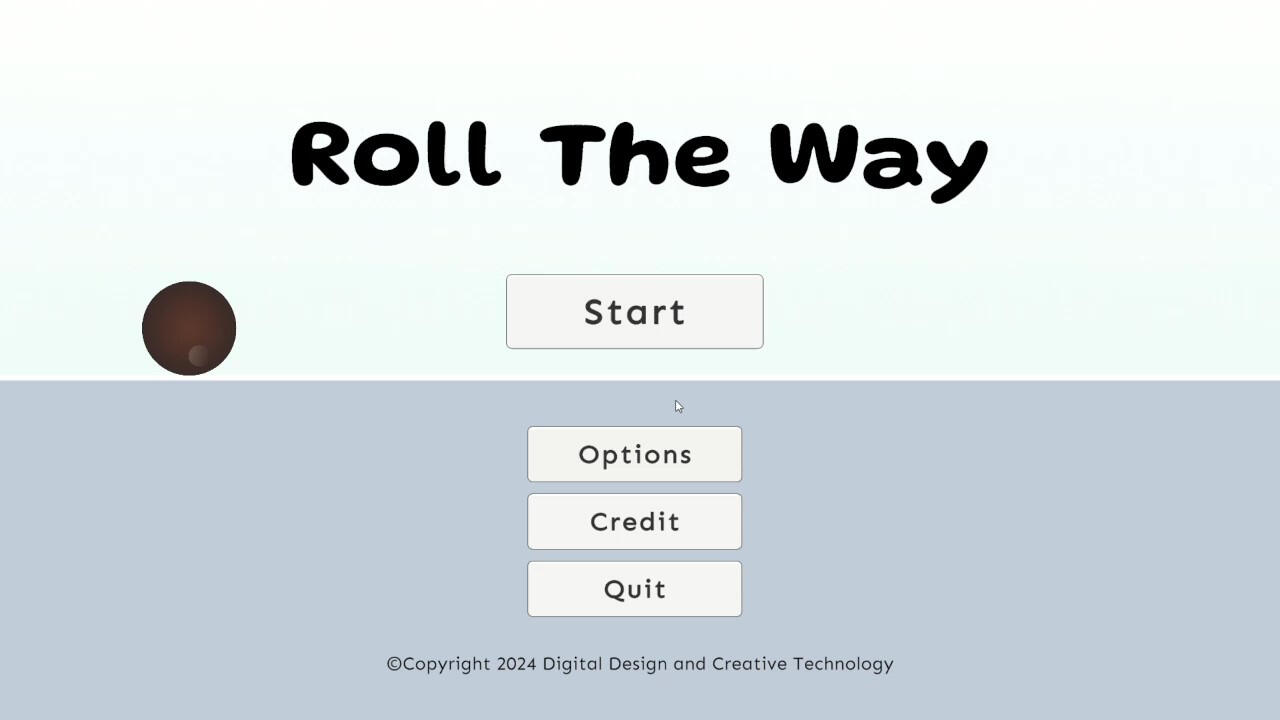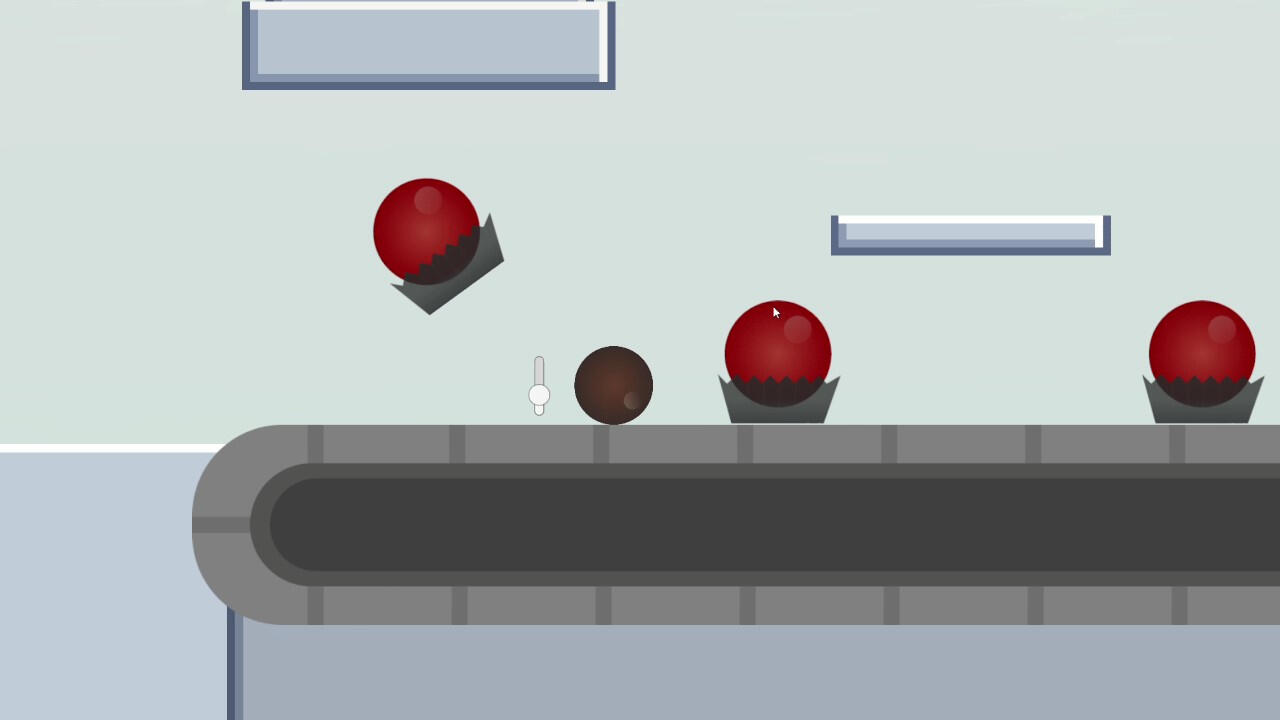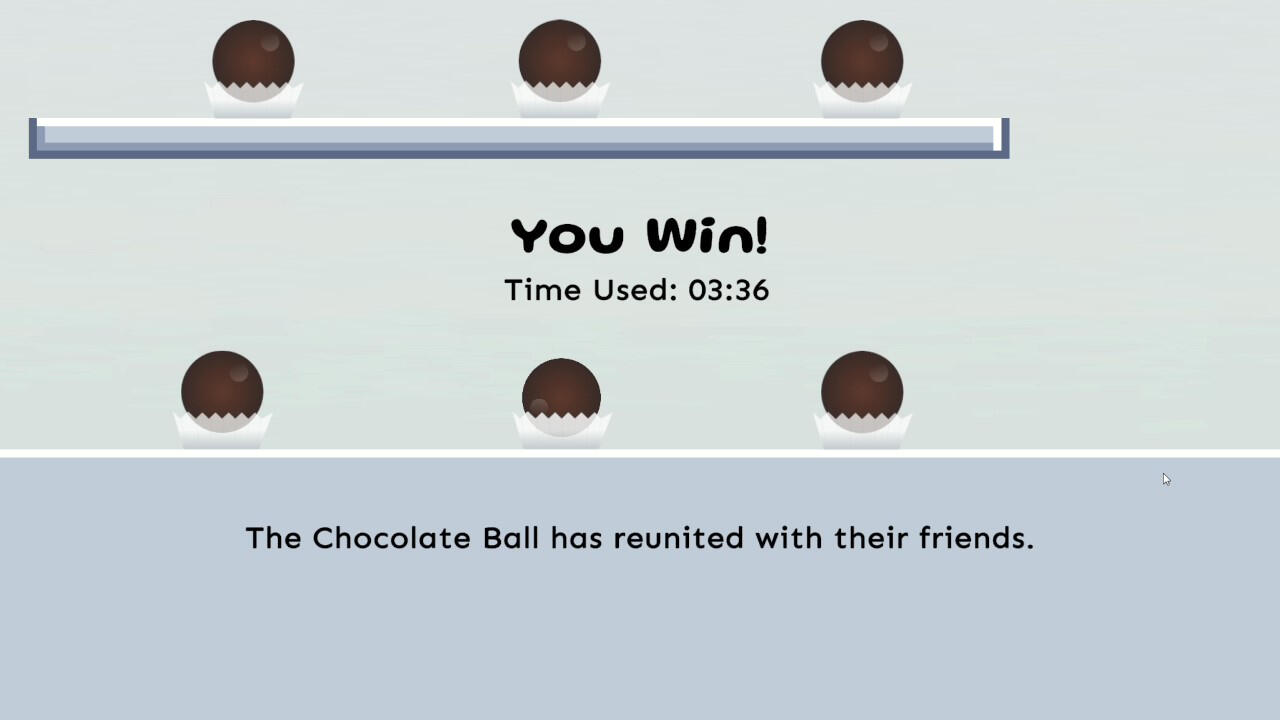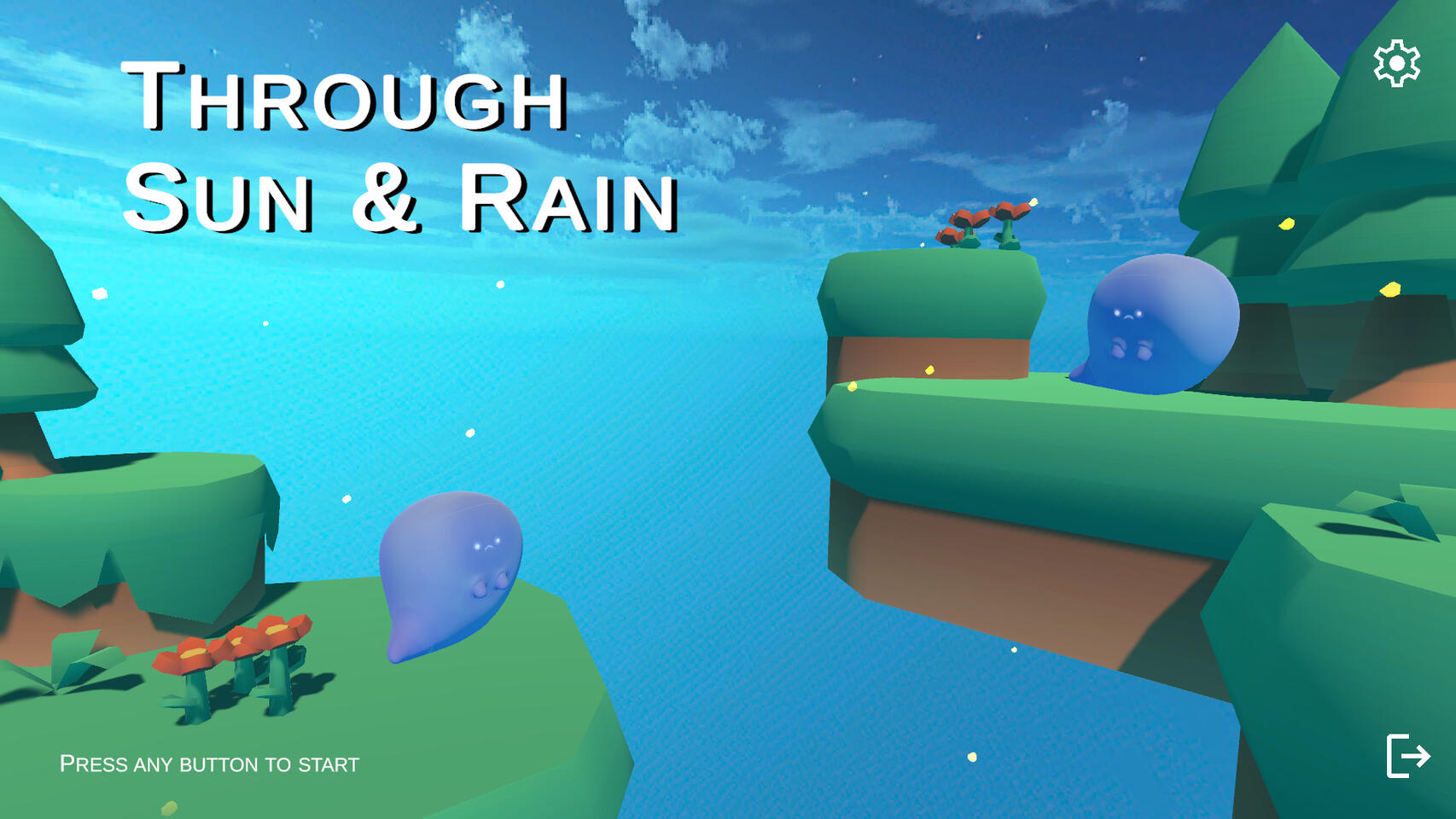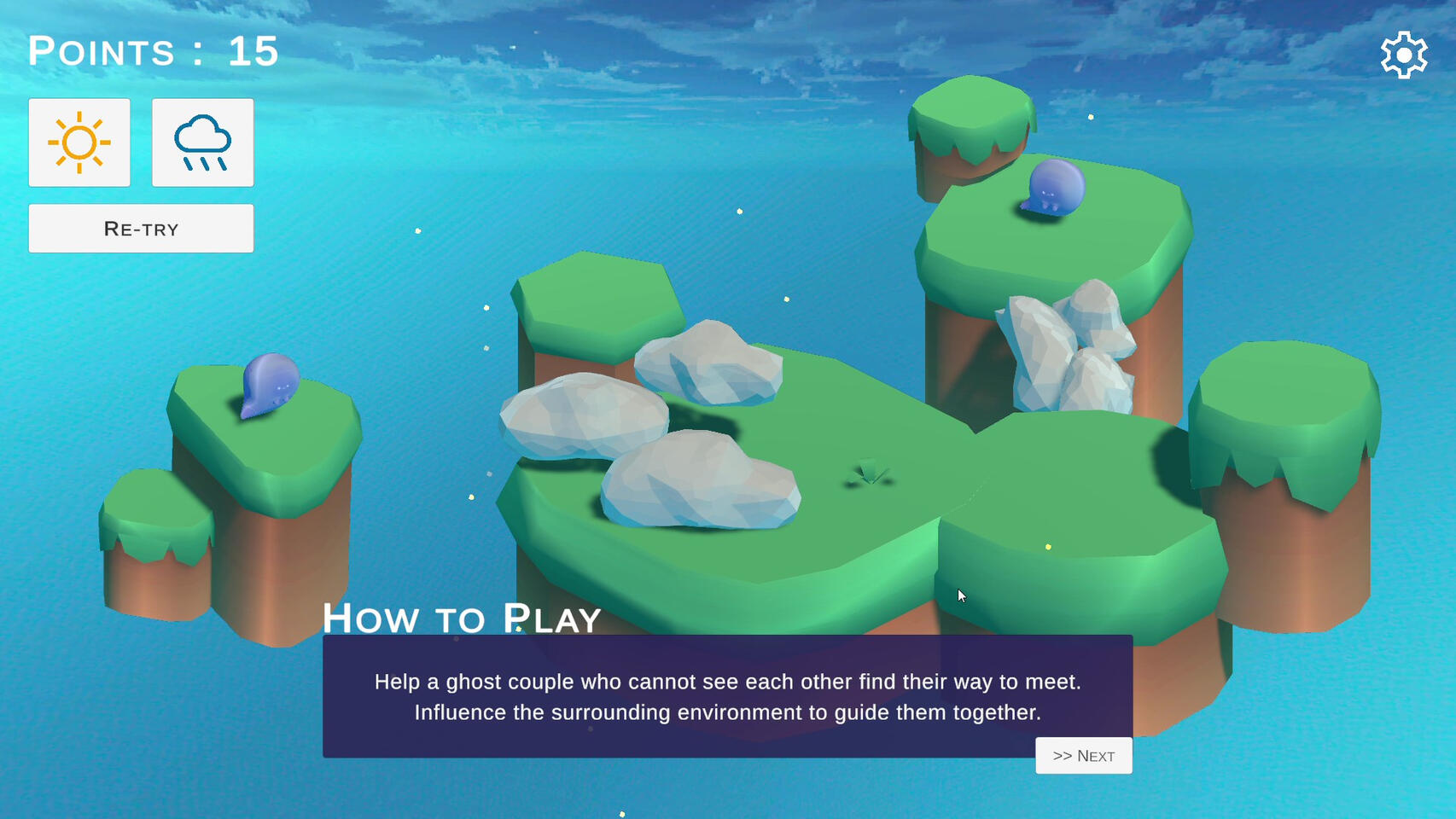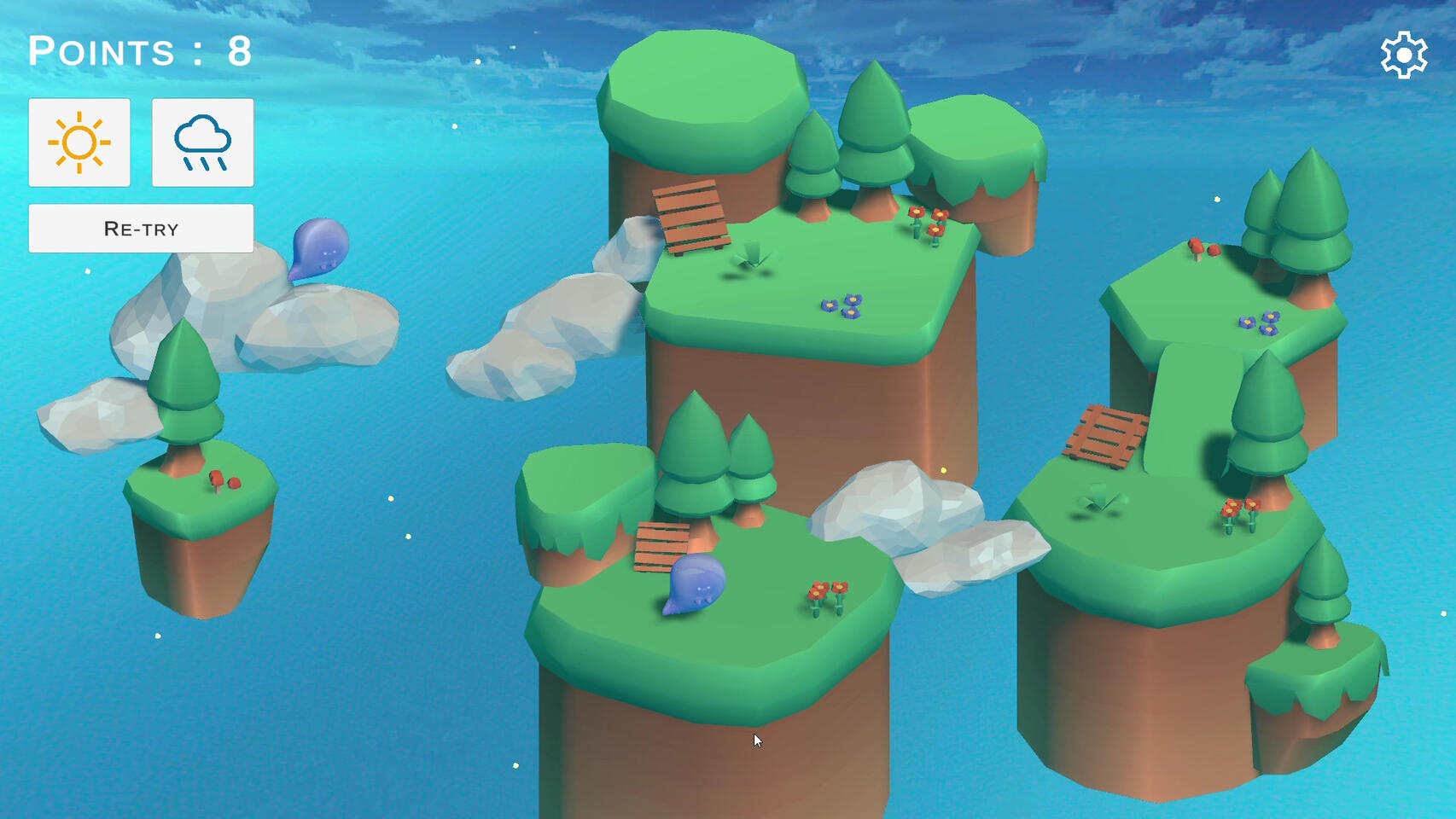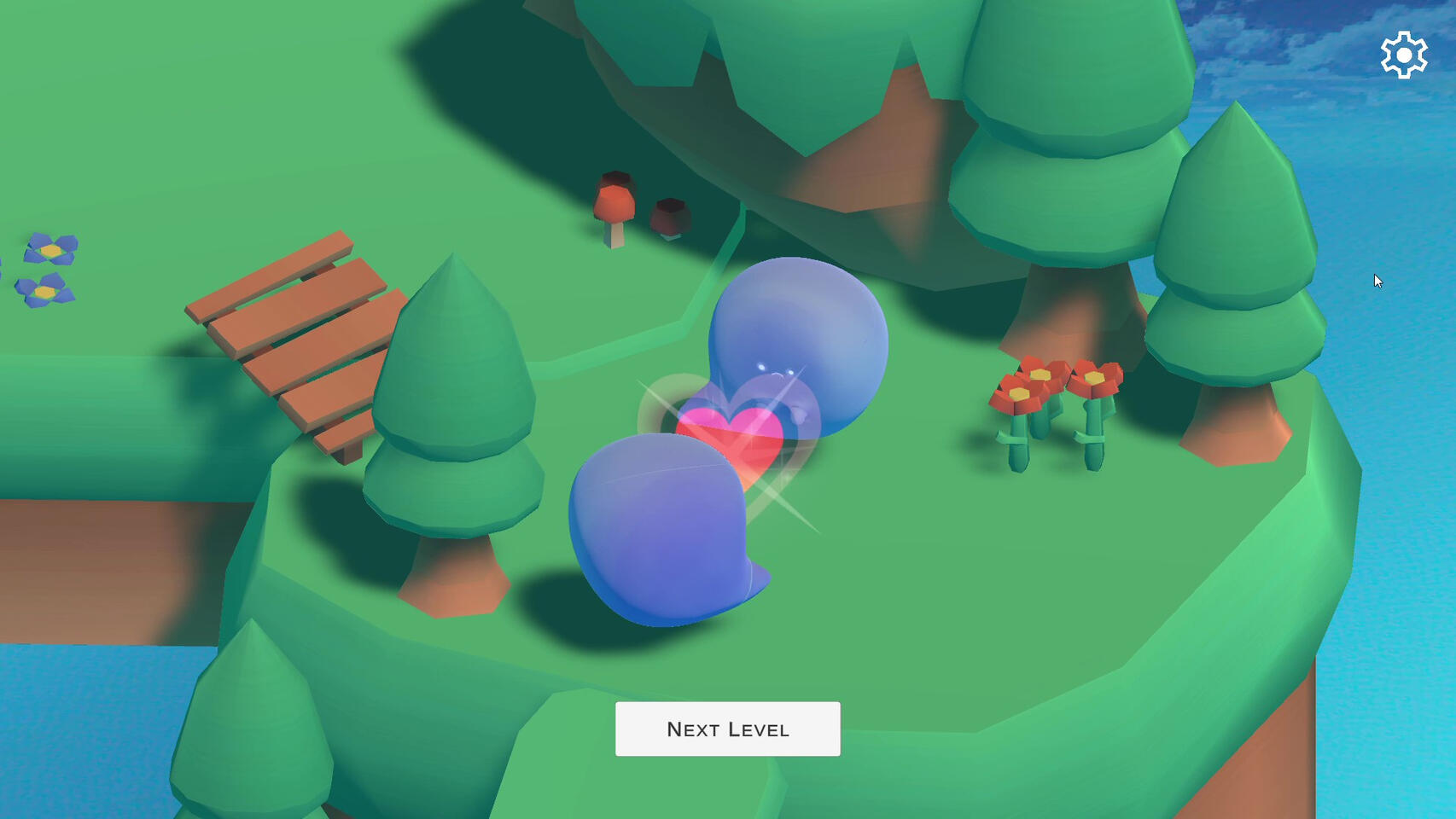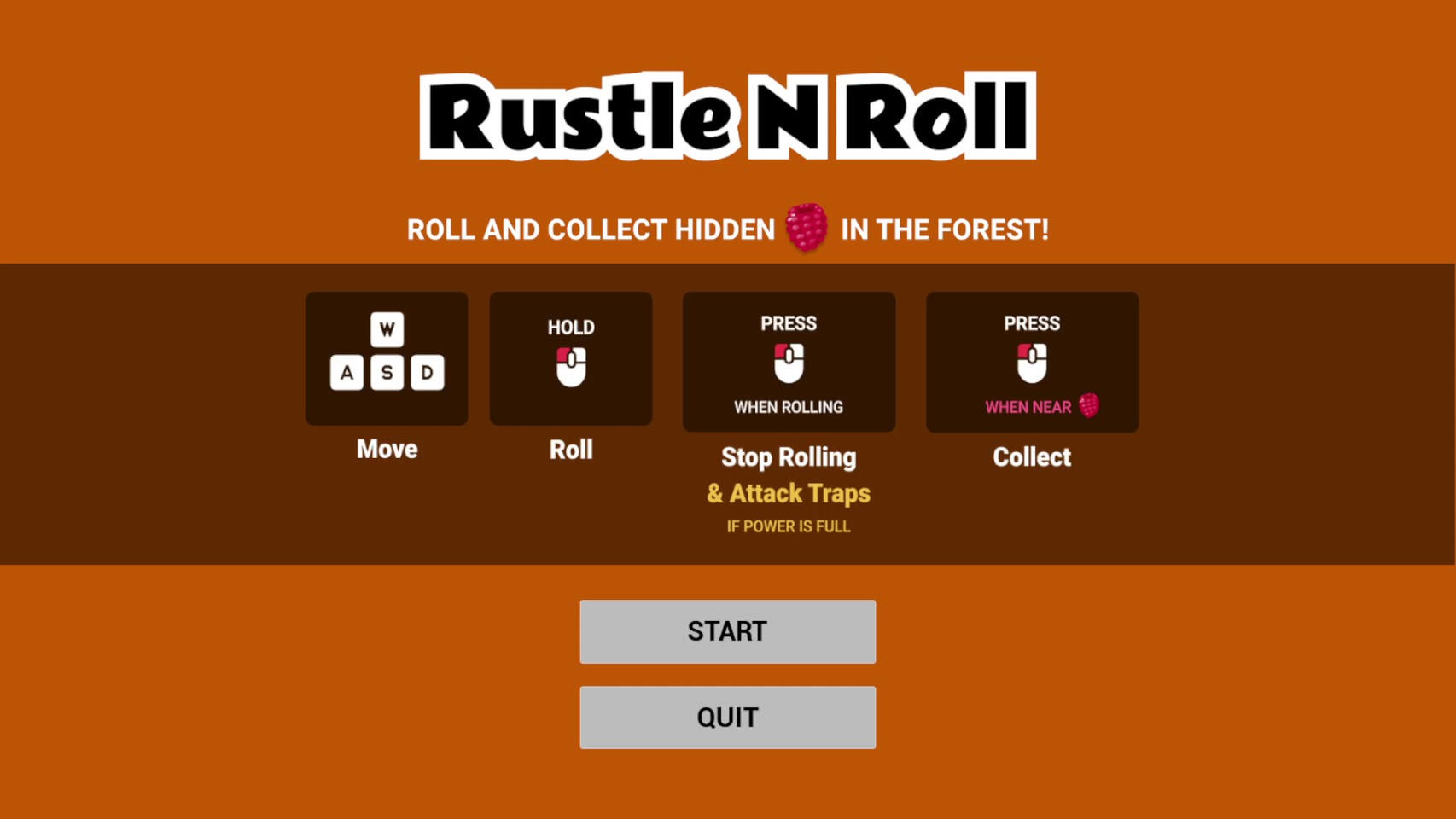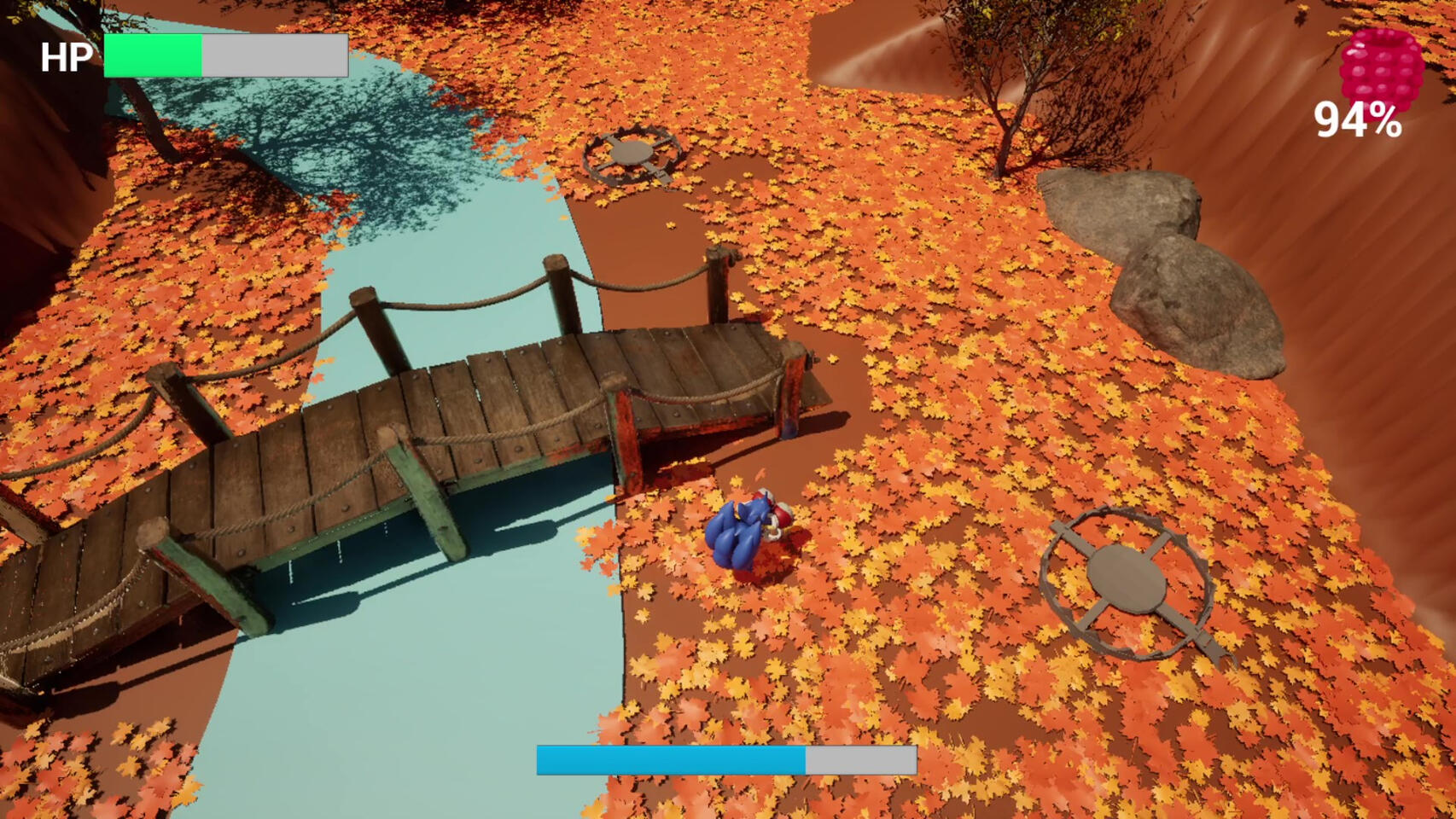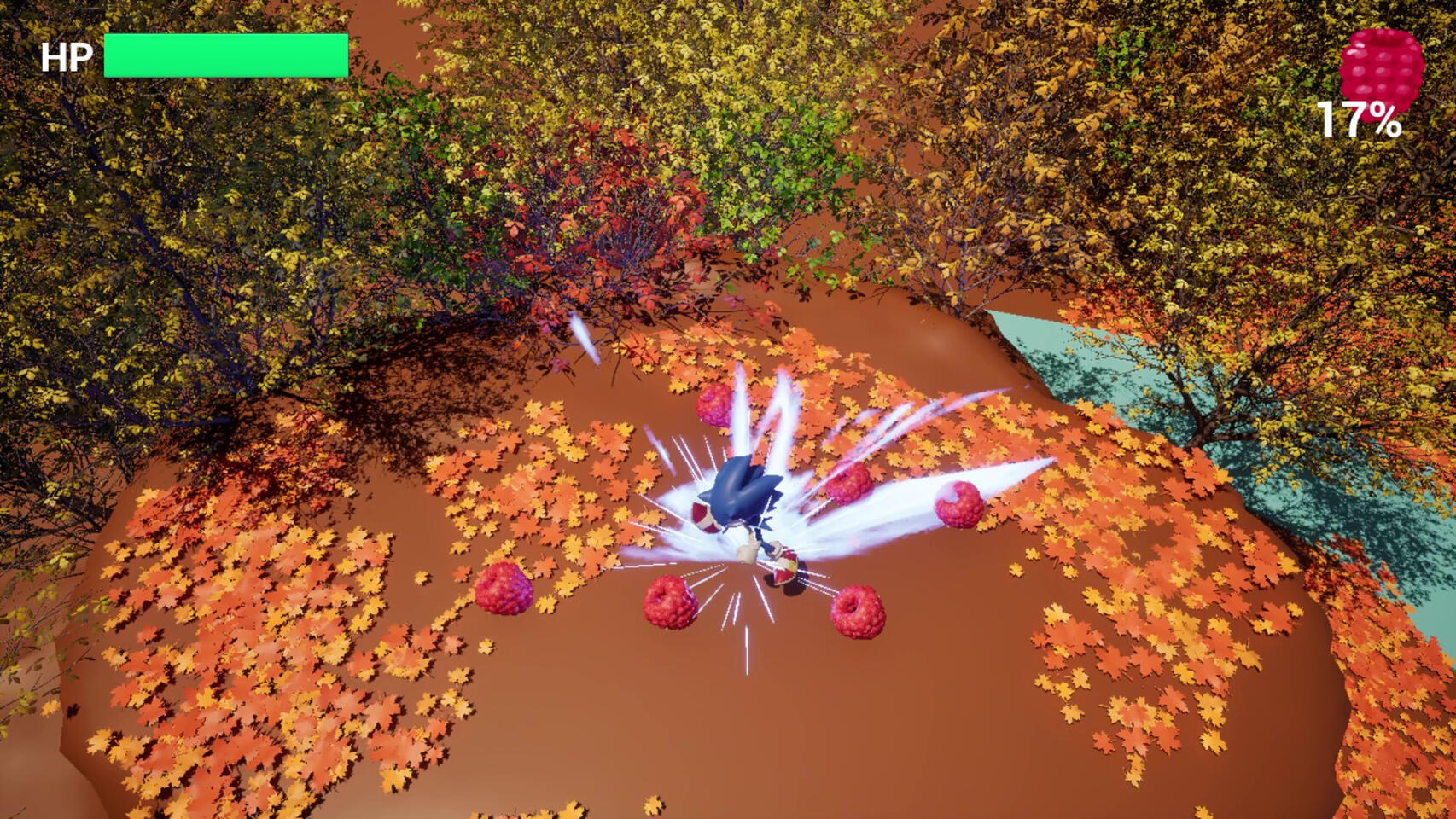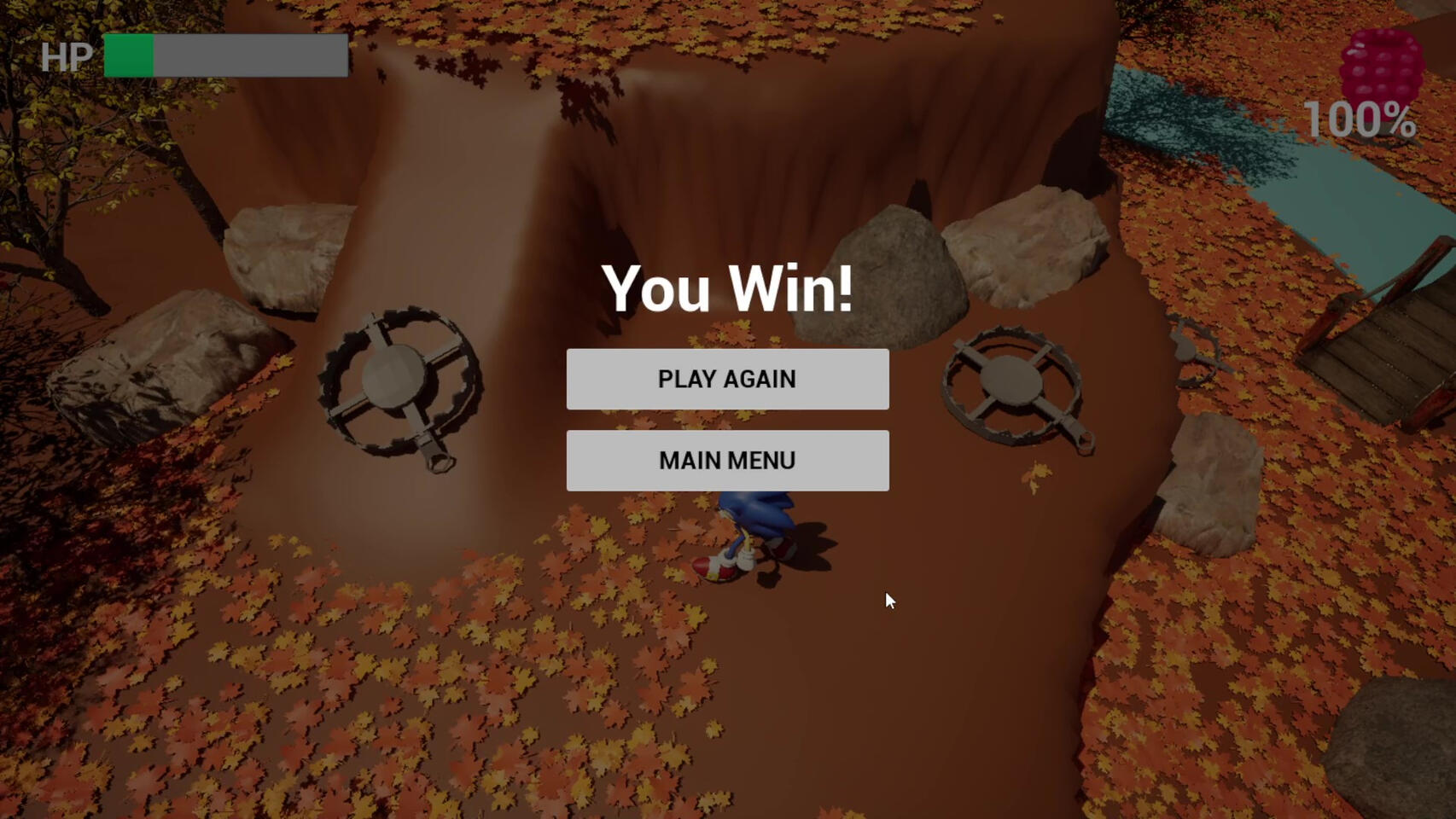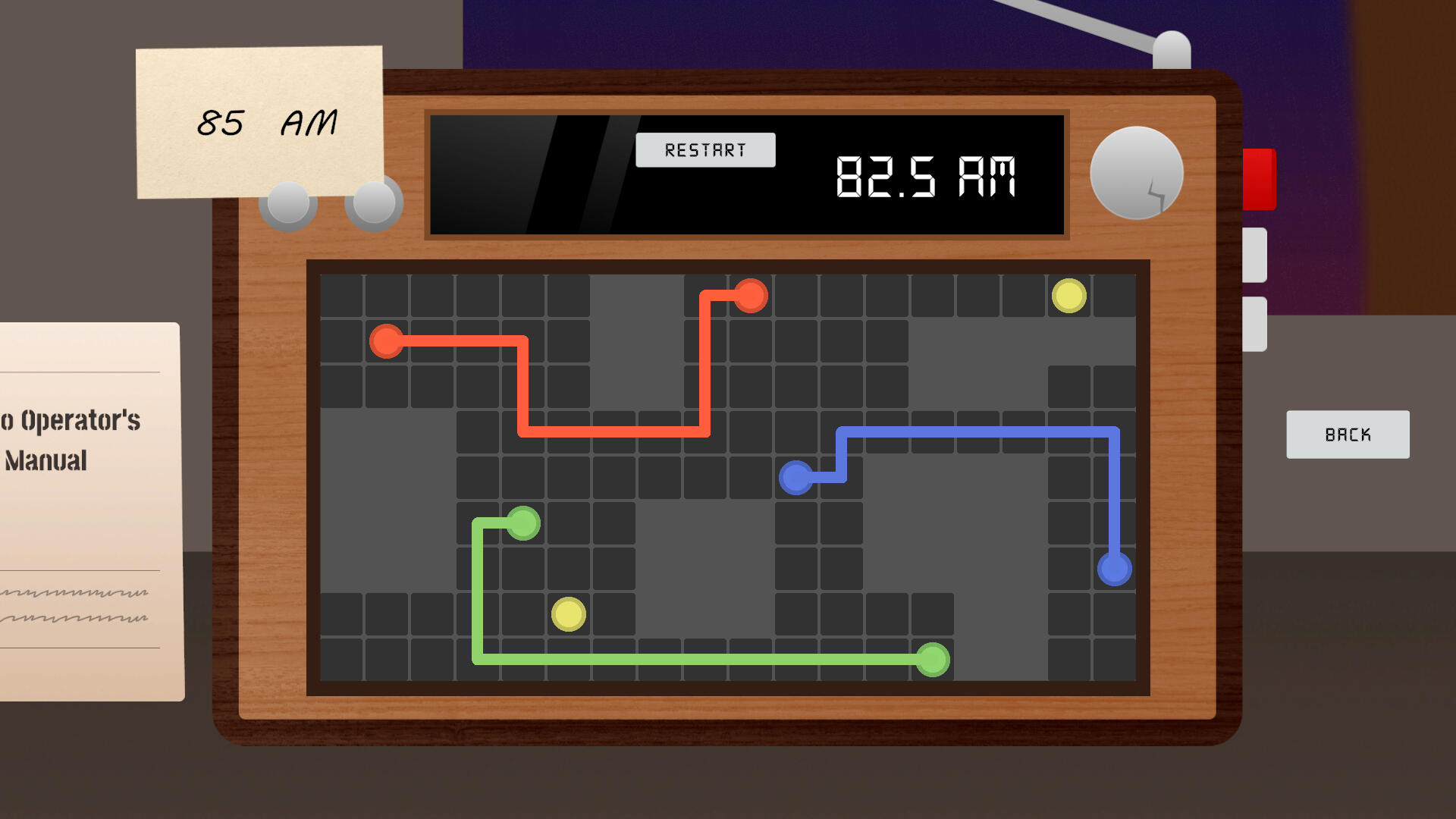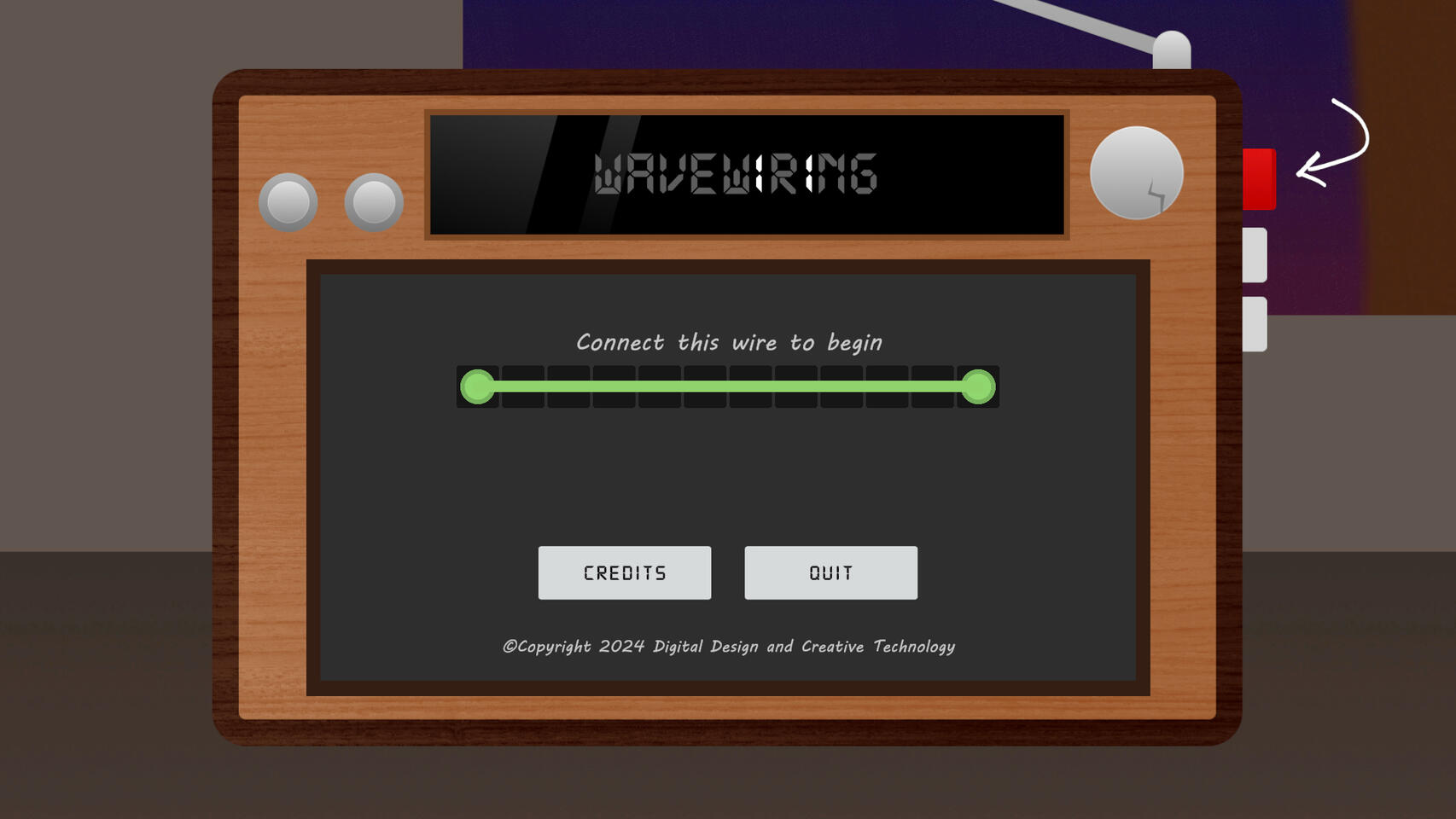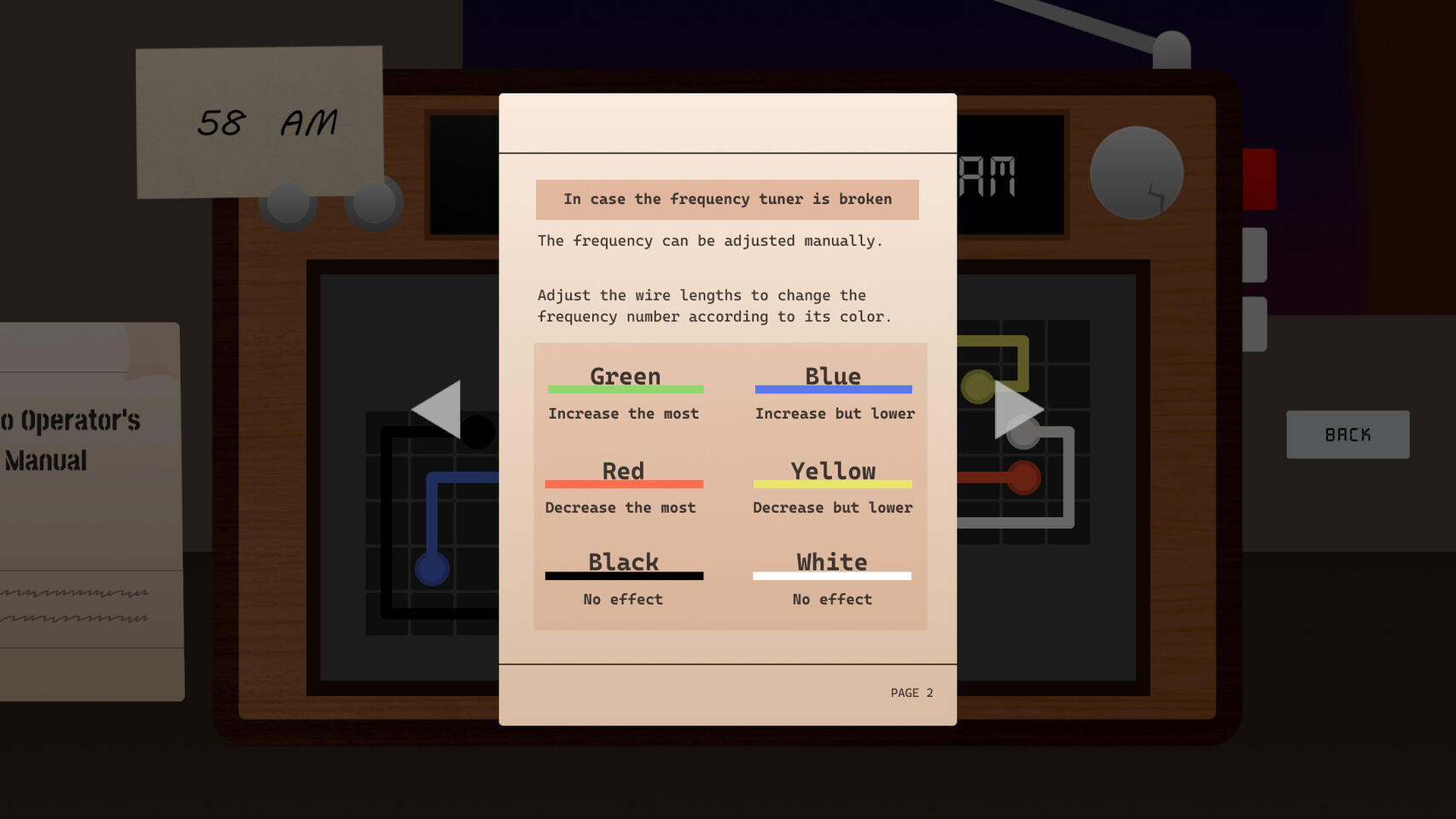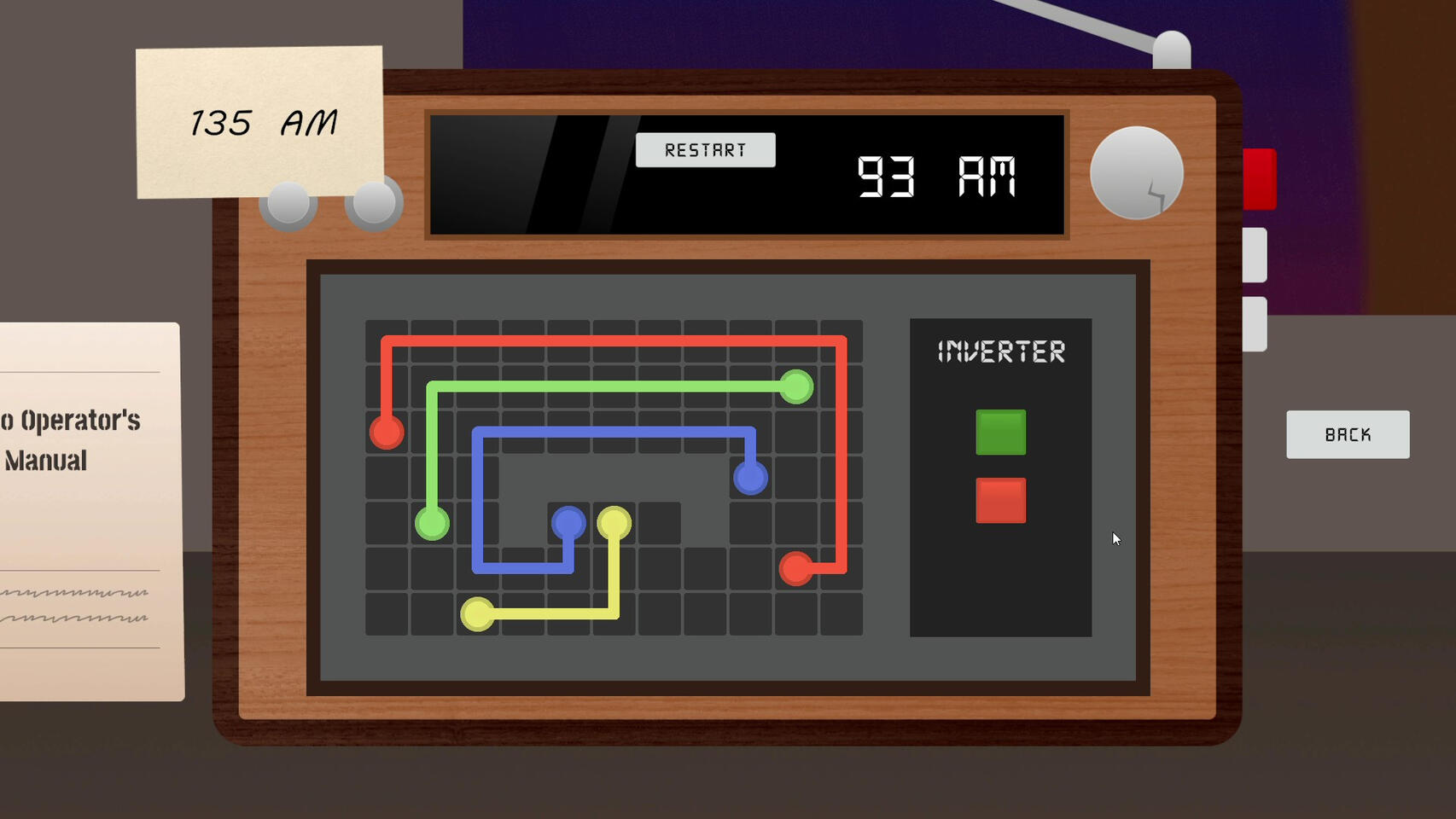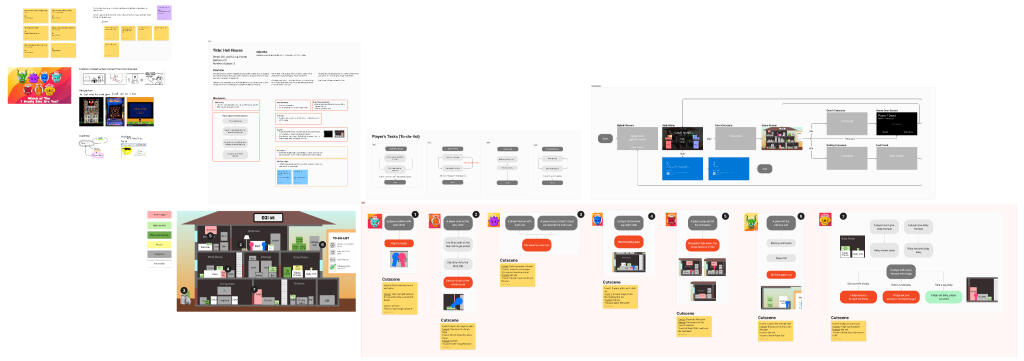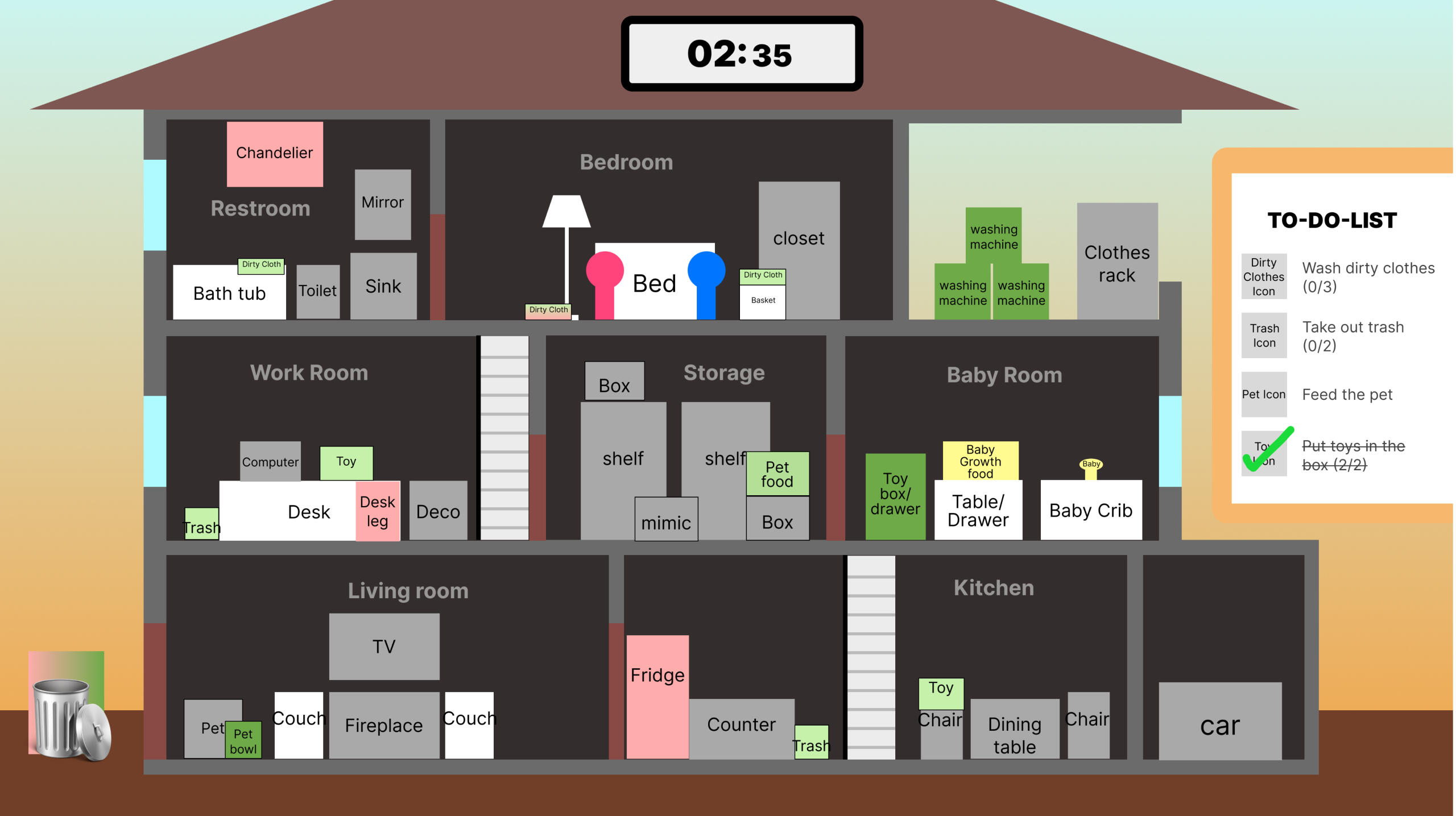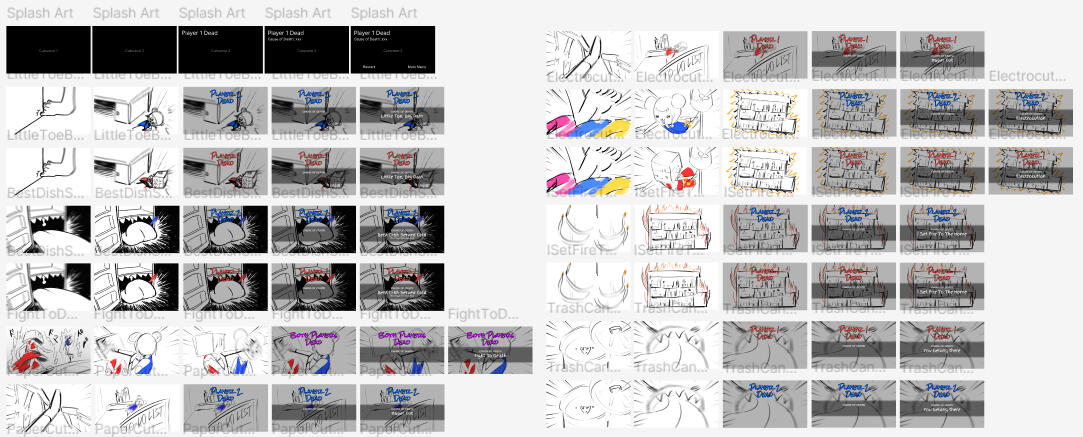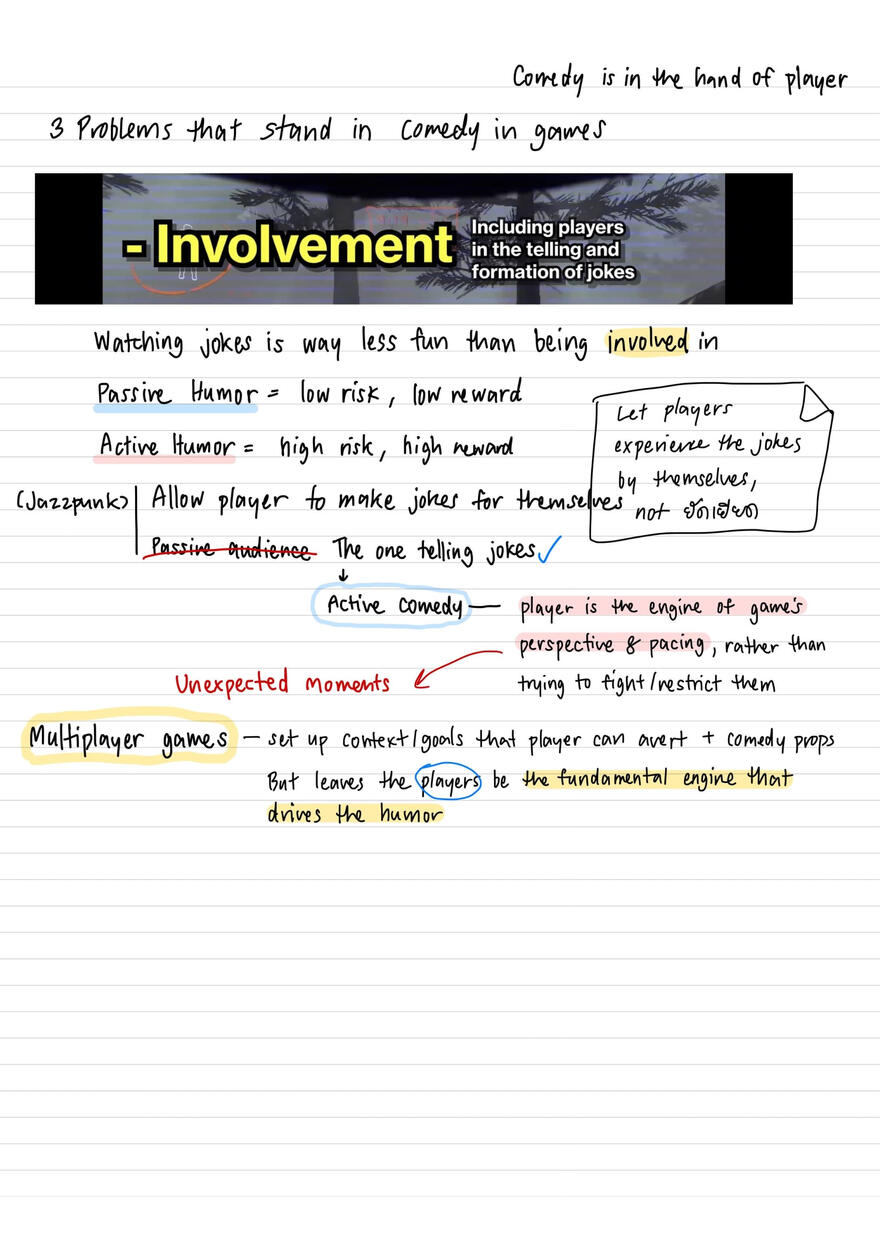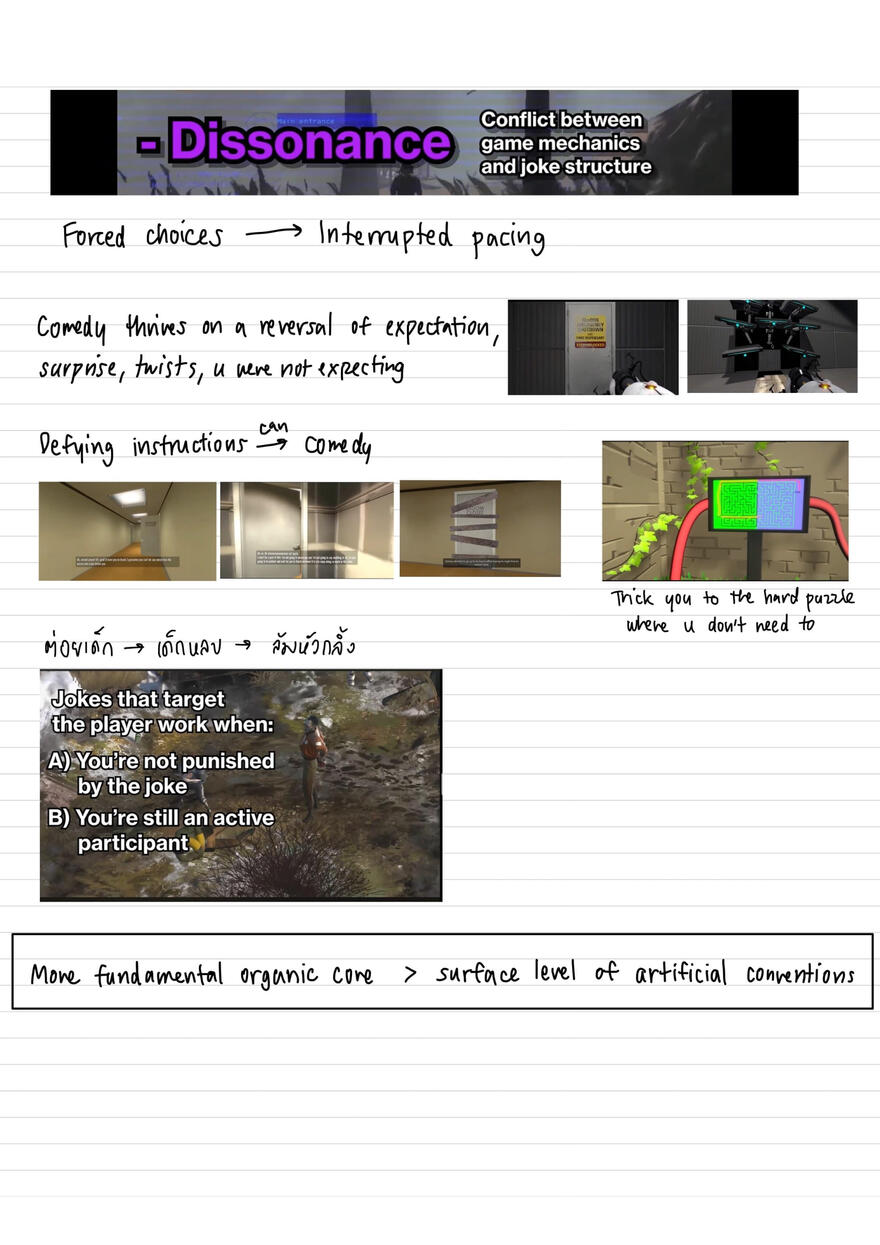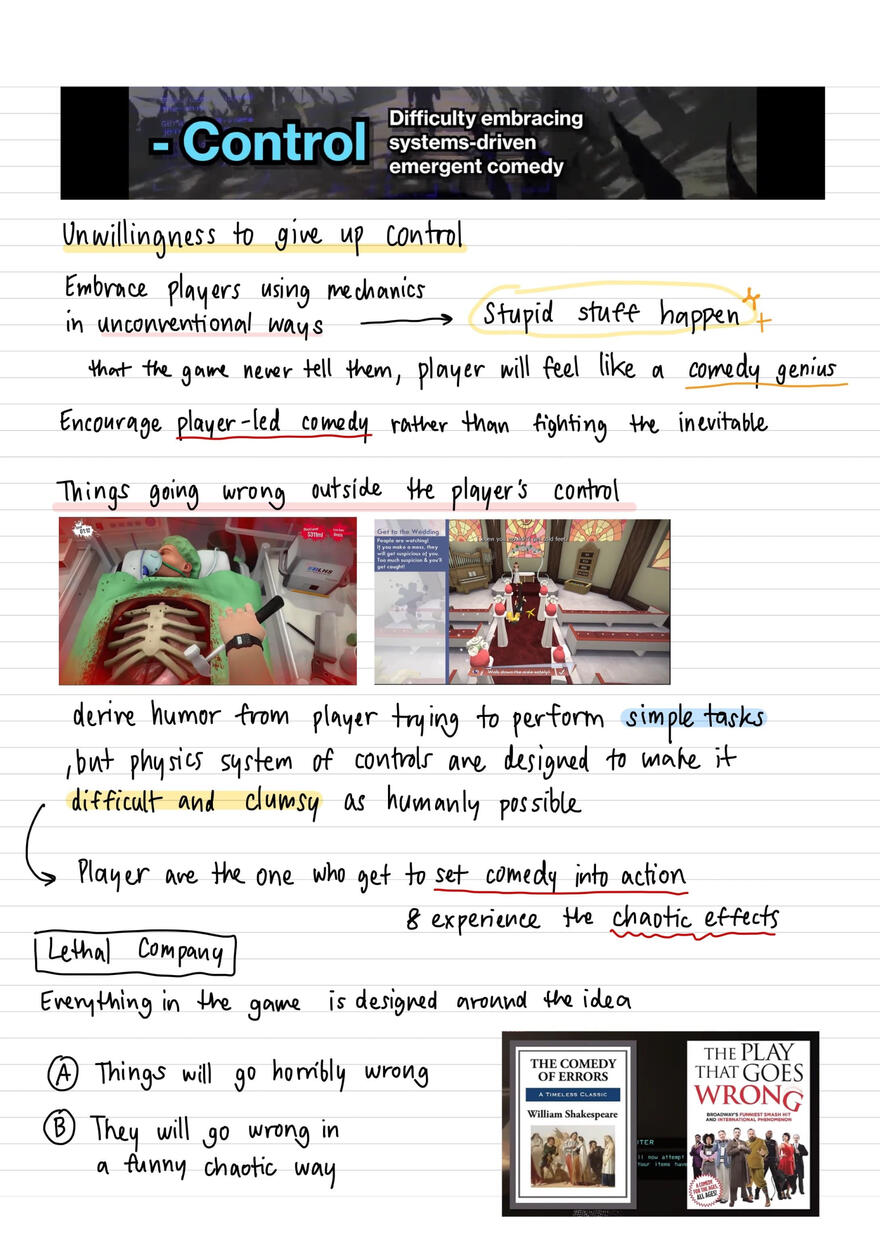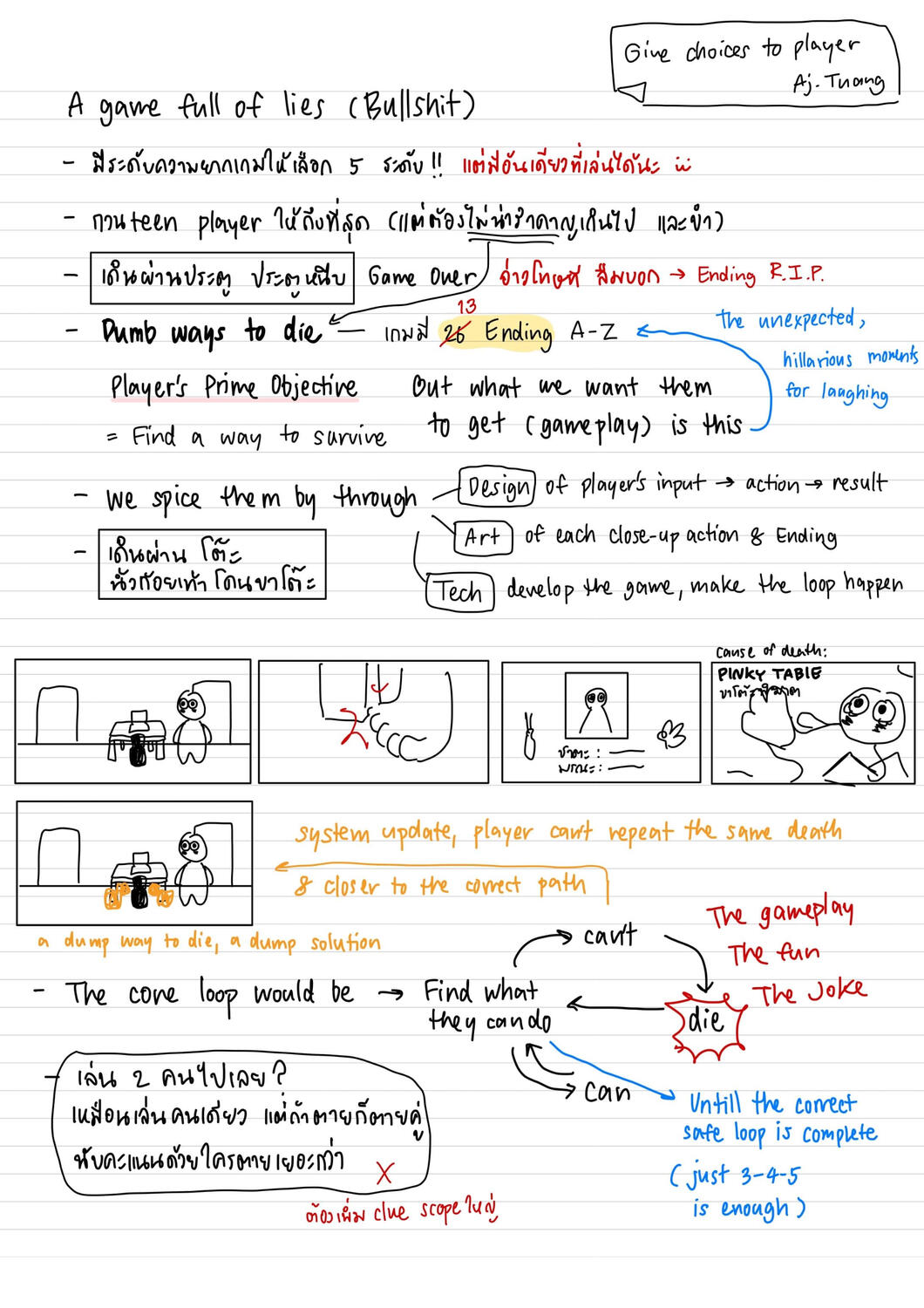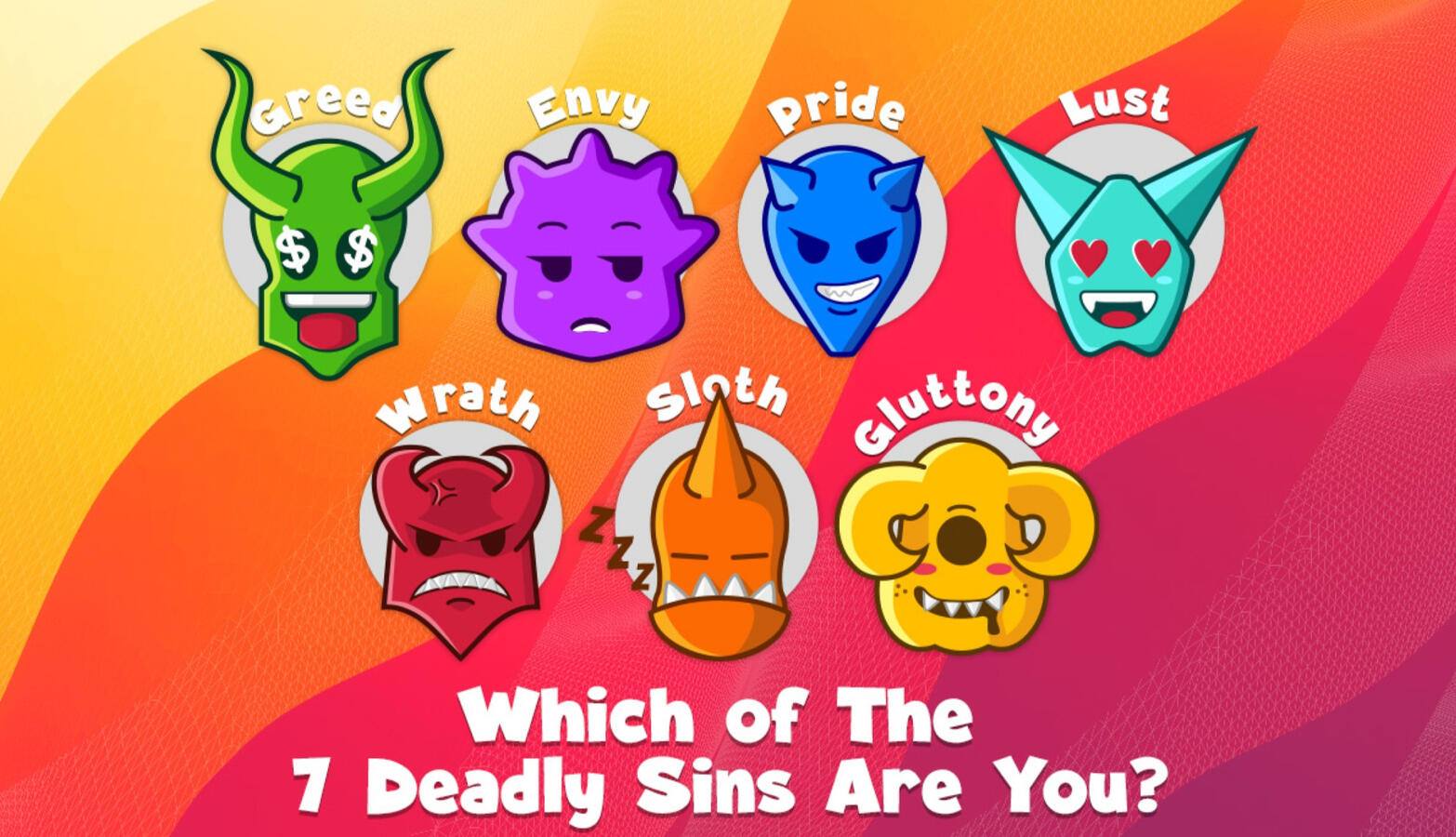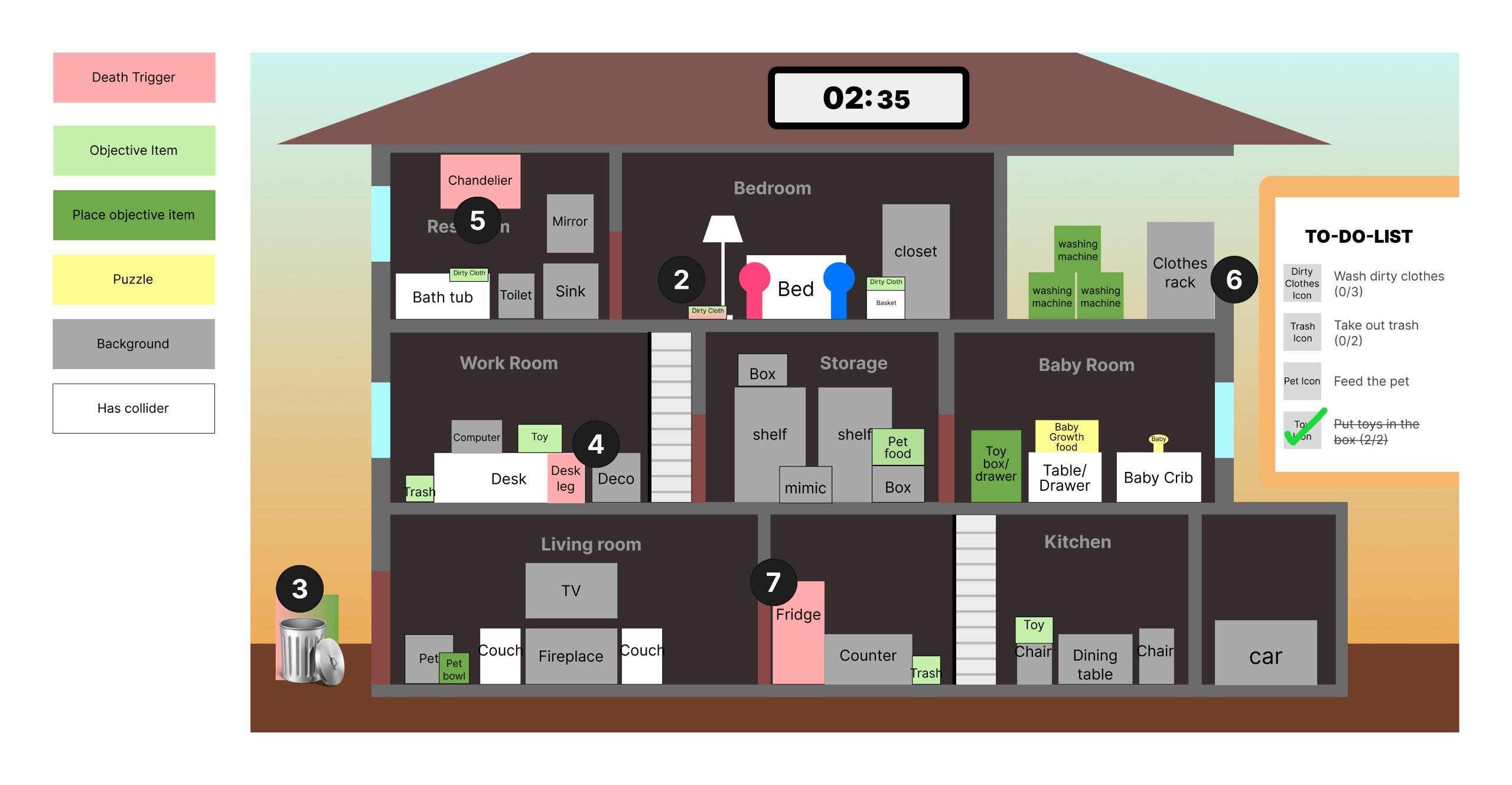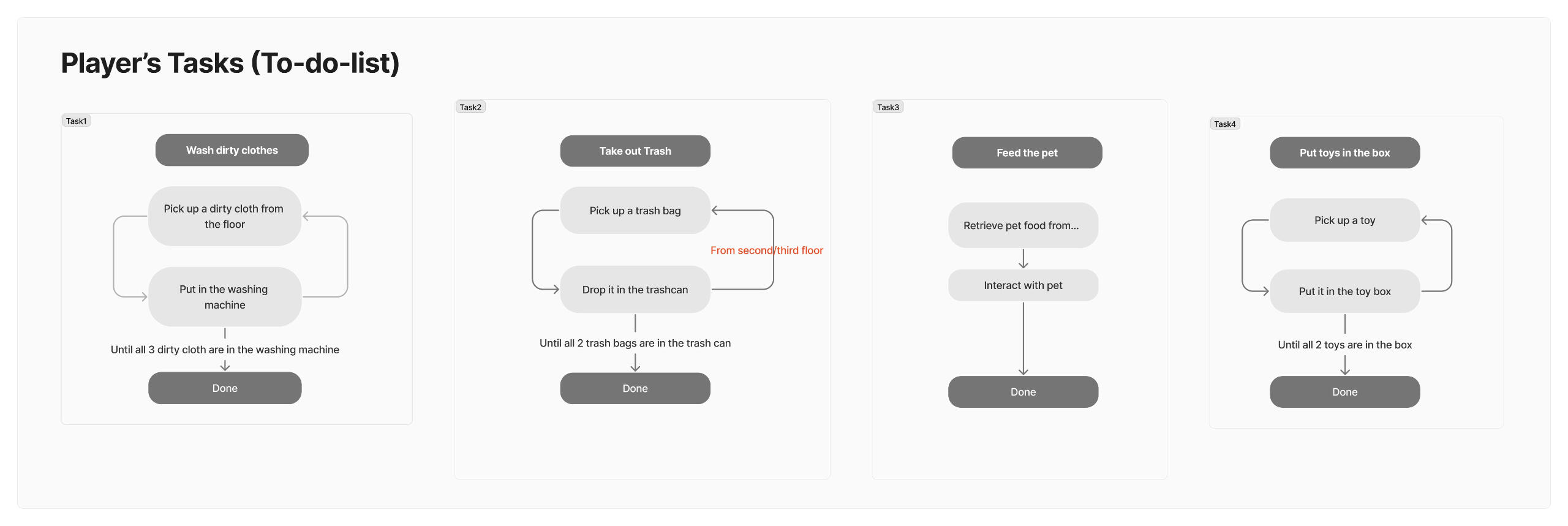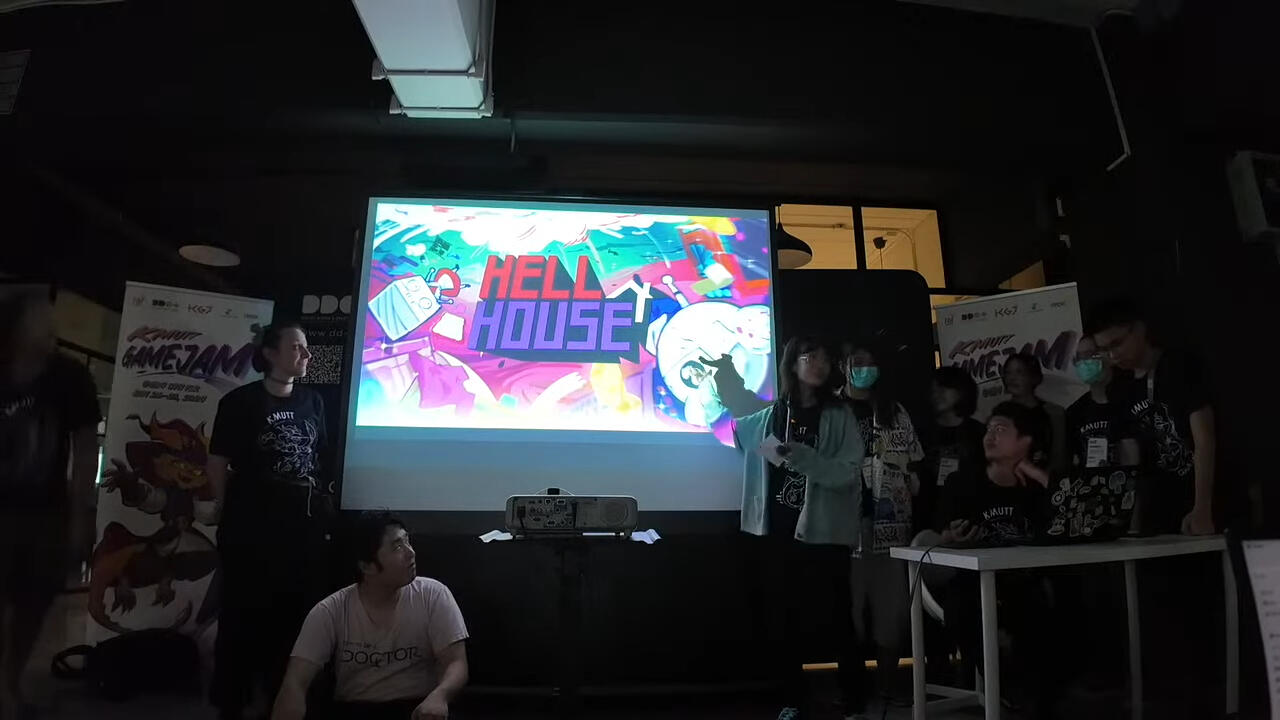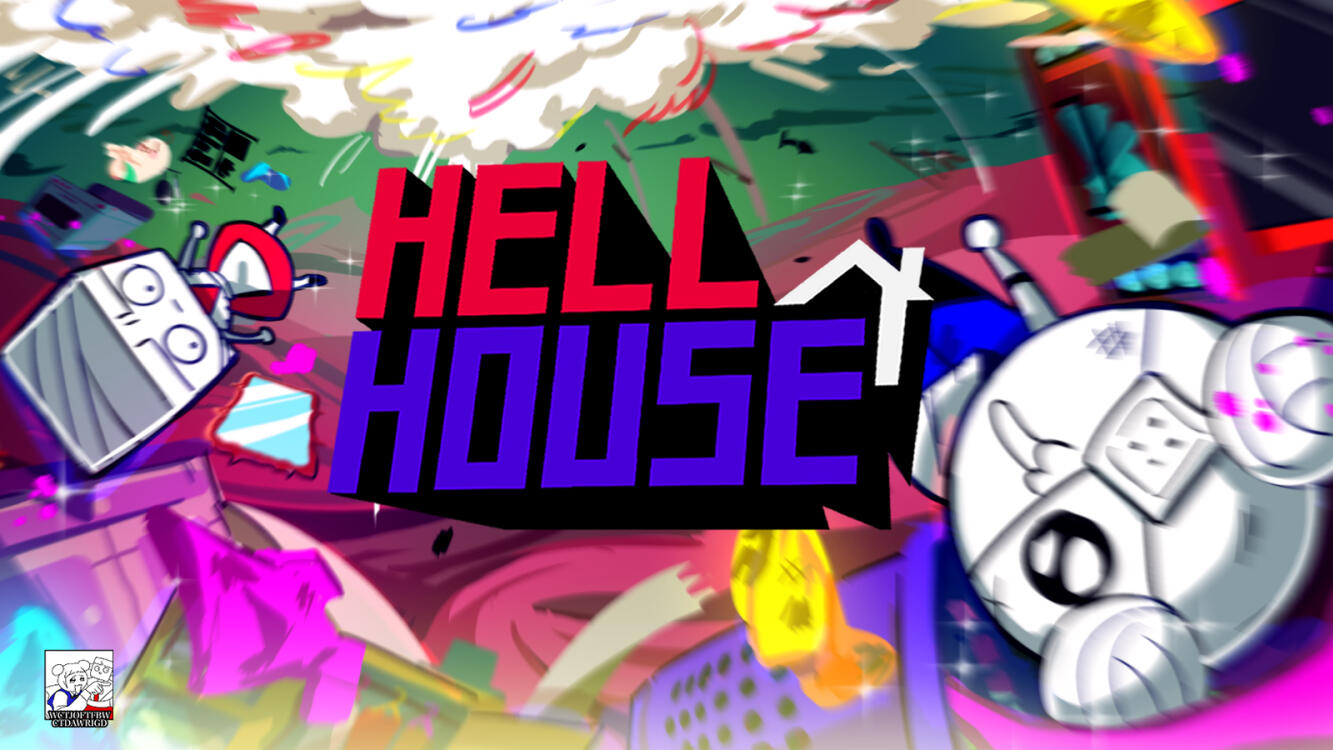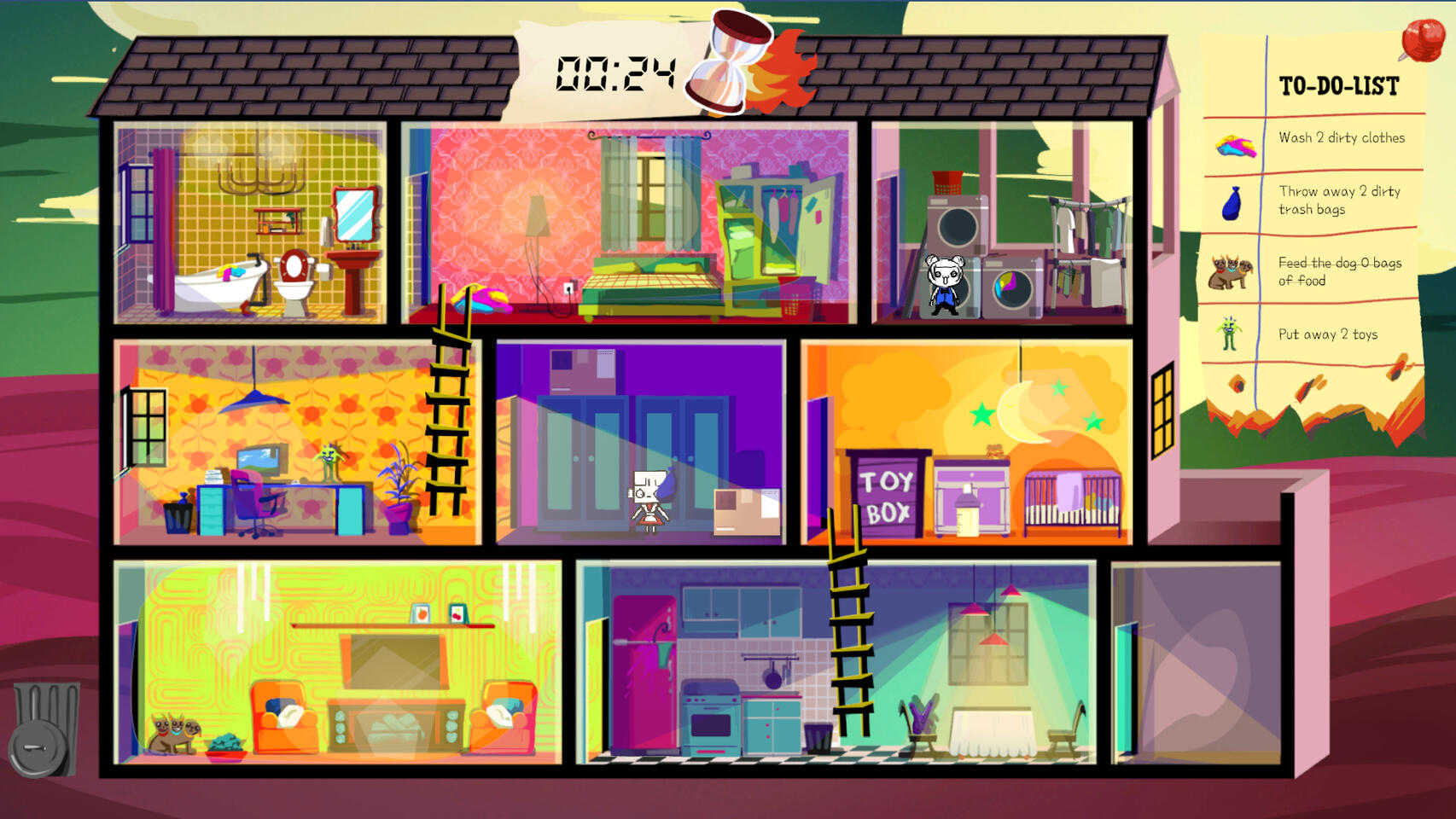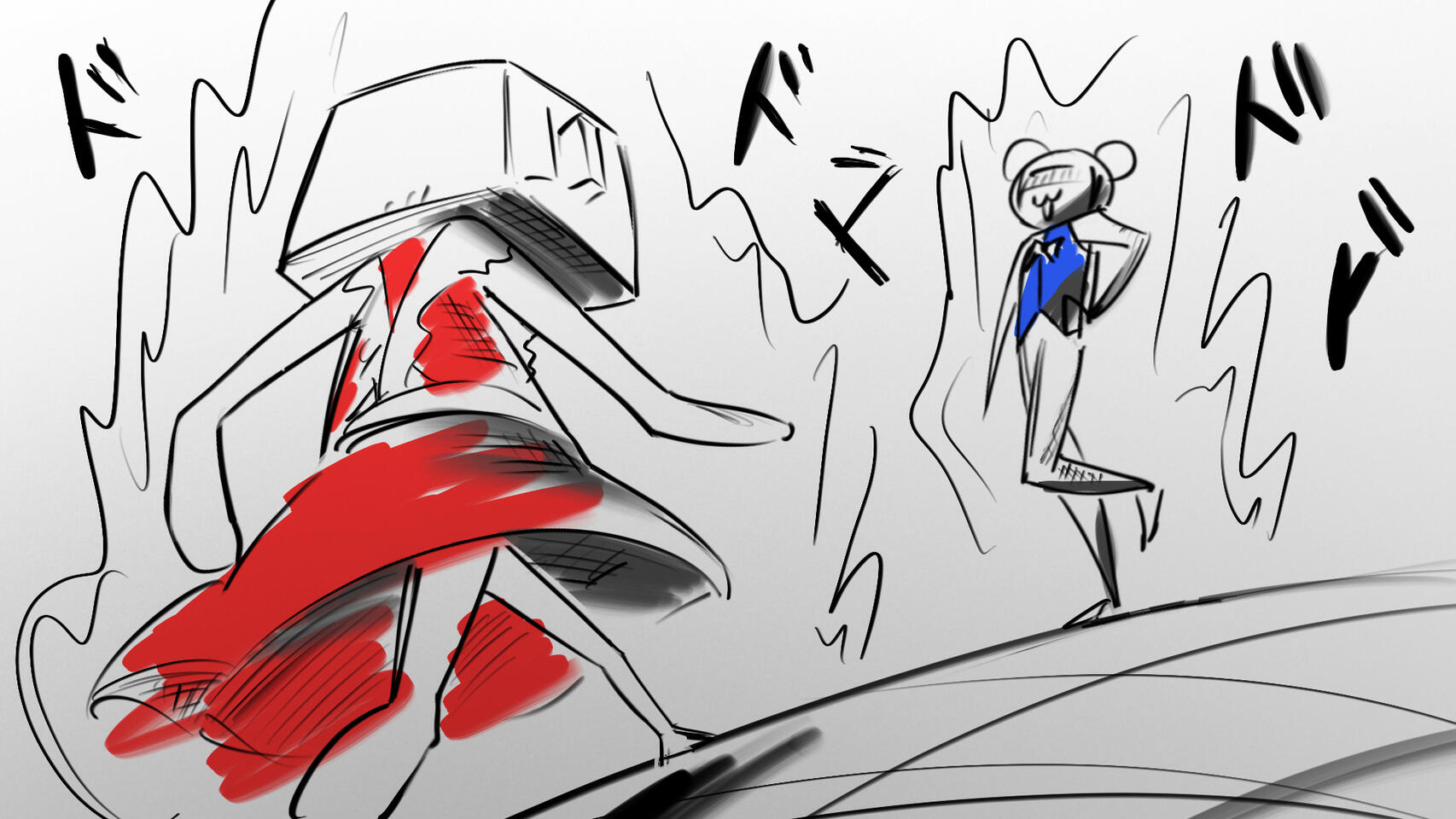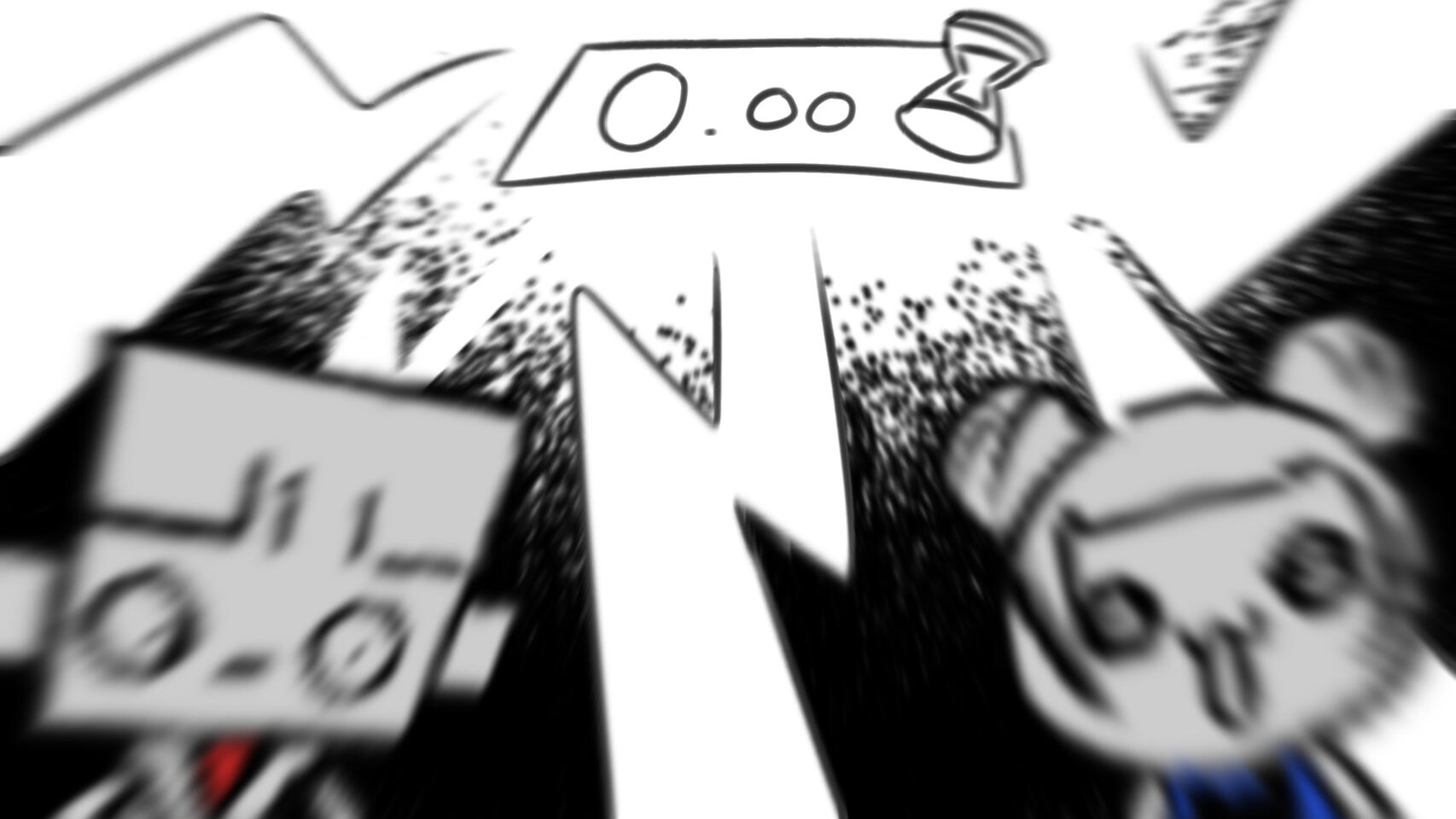Back to Main Site
Shameless Soba ๒
Overview
You decided to live mukbang from a popular soba restaurant, but your plan goes wrong when your rival channel shows up here to live mukbang too!Eat soba with speed, precision, and style to attract viewers and outshine your rival who shamelessly tries to steal your spotlight!!
Shameless Soba ๒ was made for DDCT EXP Boost game jam in 2024.
Genre: Rhythm, Action, Arcade
Development Time: 1 month
Role: Game Designer, UX/UI Designer, Project Manager
Engine: Unity 2D
Team Size: 7
Roles & Responsibilities
Gameplay Design
Develop core game concepts and mechanics.
Mock up game flow to demonstrate gameplay.
Develop and organize design documentation board.
Provide asset creation guides for artists.
Design Board
The interactive board used for in-team design communication.
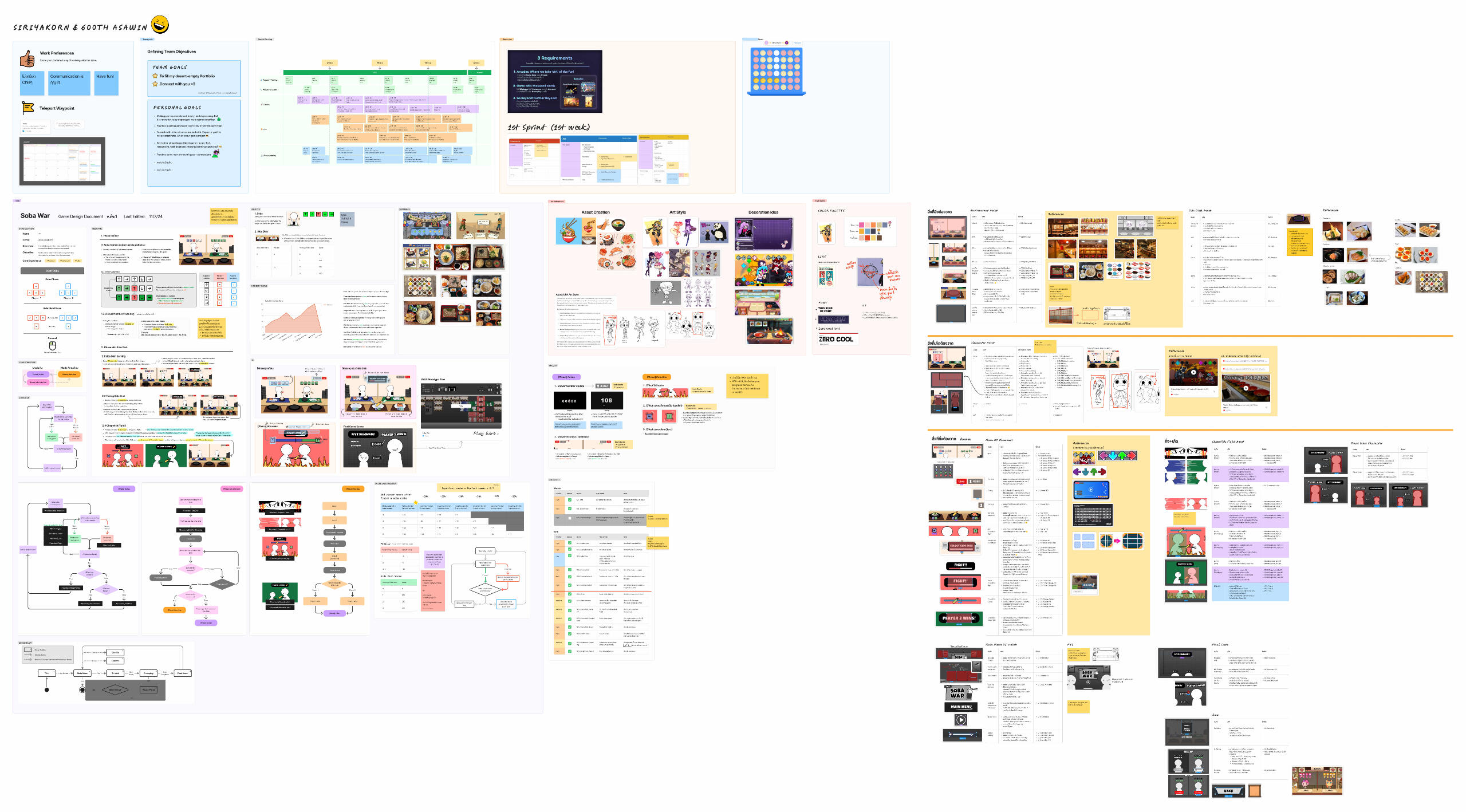
UX/UI Wireframe Design
Design Process
Coming soon!
Ticking Tea Time
Overview
Play as a detective in disguise, serving afternoon tea to uncover the spy hidden among first-class passengers, all in a race against time to prevent a national catastrophe with a nearly ticking bomb.
Ticking Tea Time was created for DD291 Digital Design Project course in 2023 and received BIDC's Rising Star Award for Games, as well as PlayPrime's Best Narrative Award in 2024.
Genre: Adventure, Simulation
Development Time: 11 months
Role: Game Director, Game Designer
Engine: Custom Engine (OpenGL)
Team Size: 7
Roles & Responsibilities
Game Direction
Develop and articulate the game's overall theme and concept.
Oversee the game's development process from concept to completion.
Work with the producer to create and maintain game design document, character bible, and asset lists.
Analyze player feedback to make informed decisions about design improvements.
System Design
Develop core gameplay mechanics and game structure.
Design the meal preparation, interaction levels, and clue activation systems to deliver the game's core concept.
Collaborate with programmers to integrate content into game systems using a custom C++ engine.
Adjust parameters to maintain the aimed level of challenge and engagement.
Narrative Design
Create and develop the main storyline, including plot points, characters, and settings.
Collaborate with the design team to write detailed story arcs that align with the game's vision and design.
Develop and oversee dialogue branches, integrating the clue activation system with narrative branching.
Refine dialogue lines in collaboration with the design team.
Convert dialogue sheets into XML files and implement them into the game's engine.
UX/UI Design
Develop wireframes, mockups, and prototypes to visualize UI elements and interactions in every game scene.
Collaborate with UI artist to create UI assets, providing detailed briefs and references.
Work with programmers to implement UI assets into the game, adjusting them to ensure effective user experience.
Sound Design
Create a list to track sound assets intended for the game.
Source royalty-free sound effects and music to create immersive atmosphere that matches the game's theme, environment, and gameplay actions.
Use Audacity to edit and mix audio files.
Balance audio levels to make sound mix polish and cohesive.
Design Board
The interactive board used for in-team design communication.
▸ Design narrative branches ▸ Develop initial dialogue lines ▸ Create flowcharts ▸ Provide asset creation guide for artists

UX/UI Wireframe Design
Medium Fidelity / Game Flow Demonstration
High Fidelity
Game Design Document
Design Process
Coming soon!
Heart Catching: Classroom 120
Overview
Experience your high school romance in Thailand through iconic activities and culture. Win the hearts of 6 club members, regardless of gender, and engage in real-time interactions with daily chats and video calls!
Heart Catching: Classroom 120 was developed from UX/UI prototype to game concept project, qualified as one of the Amateur games for DEPA Game Accelerator Program 2023.
Genre: Dating Simulation
Development Time: 7 months
Role: Game Designer, UX/UI Designer, Business Analyst
Tool: Figma
Team Size: 3
Roles & Responsibilities
Concept Design
Collaborate with the design team to develop and refine the game's high concept as following:
Design core features and mechanics for the dating simulator experience.
Create and balance game systems, including those with microtransactions.
(See full document below)
Develop branching narratives that align with the overall narrative structure and key story beats.
UX/UI Design
Conduct user research to define target audiences and create user personas.
Collaborate with the lead UX/UI designer to develop wireframes and prototypes, from low-fidelity to high-fidelity.
Perform usability testing to enhance user experience, identify pain points, and iterate on designs.
Business Analysis
Design in-game monetization systems: microtransactions, premium content, and rewarded advertisement.
Conduct market research on Thai and international markets in dating simulation games, analyzing competitor games, audience preferences, and industry trends to determine the game's selling points.
(See full document below)
Develop business and revenue models, aligning them with the target audience's behavior.
Design in-game events to drive player retention and acquisition, as well as initial marketing strategy.
Figma Prototype
Pitching Slides
Game Design Document
Design Process
Coming soon!
Chrono Escape
Overview
Trapped in a museum of time, you must find your way out using the magical pocket watch that can shift between two different time periods.
Chrono Escape was made for class DDG110 Design Process in 2023.
Genre: Puzzle, Escape Room
Development Time: 4 months
Role: Game Designer
Engine: Unity 2D
Team Size: 8
Roles & Responsibilities
Gameplay Design
Conceptualize the game with team.
Develop mock-ups to demonstrate game mechanics and interfaces to technical developers and artists.
Collaborate with the design team to create game dialogues that integrate with the puzzle game flow.
Puzzle Design
Design puzzles, game flow, and the level environment for level two.
Assist in refining level one's puzzles and layout with the design team.
Sound Design
Source free-license sound effects and music with the design team to create immersive atmosphere for object interaction and audio feedback.
Edit and mix audio files for functionality and polish using Audacity.
Design Process
Coming soon!
Roll The Way
Overview
Play as a chocolate ball that has lost its way in the factory. Jump and roll your way through the actively running factory to reunite with your fellow chocolate ball friends!
The game was created for the Game Design 1 course in 2024 with a focus on being a physical challenge game.
Genre: Platformer
Development Time: 5 weeks
Role: Solo Project
Engine: Unity 2D
Development document
A document summarizing development progress, including the game design document and iteration process from playtesting results.
Design Process
Coming soon!
Through Sun and Rain
Overview
A puzzle game prototype with a focus on indirect player control. Help a ghost couple who cannot see each other find their way to meet. Influence the surrounding environment through sun and rain to guide them together.
The game was created for the Scripting Language for Designers course in 2024, featuring a complete app flow, save system, one tutorial level, and two game levels.
Genre: Puzzle
Development Time: 2 weeks
Role: Solo Project
Engine: Unity 3D
Design Process
Coming soon!
Rustle N Roll
Overview
A 3D top-down arcade prototype. Roll through piles of leaves to uncover berries beneath and collect them, all while avoiding or destroying traps that stand in your way!
Rustle N Roll was created for class DDG310 Game Design 2 in 2024. The assigned challenge was to design at least three gameplay actions that share a single input.
Genre: Arcade
Development Time: 4 weeks
Role: Solo Project
Engine: Unreal Engine 5
Game Proposal Document
Design Process
Coming soon!
WaveWiring
Overview
Your task is to reconnect all the loose wires to restore the radio. However, the frequency changer is malfunctioning, adding another challenge: you must also adjust the wire lengths to tune into the correct frequency.
WaveWiring was created for class DDG211 Game Design 1 in 2024.
Genre: Puzzle
Development Time: 5 weeks
Role: Solo Developer
Engine: Unity 2D
Development document
A document summarizing development progress, including the game design document and iteration process from playtesting results.
Design Process
Coming soon!
Hell House
Overview
A local co-op game where both players must work together to clean the demon’s Hell House. Don't worry about the unfortunate events that will happen – you're completely (not) safe and sound.
Hell House was created under the theme "Make Me Laugh" for Global Game Jam 2024 and received the popular vote first prize at KMUTT jam site.
Genre: Puzzle, Arcade
Development Time: 48 hours
Role: Game Designer
Engine: Unity 2D
Team Size: 10
Roles & Responsibilities
Gameplay Design
Develop the game concept and ensure game direction is aligned with the expected experience.
Create and organize game documentation board for design communication.
Incorporate feedback from playtesting and make improvements to the game.
Design Process
The day before the game jam, I researched and gained valuable insights on effective comedy in games.
I learned that humor is most impactful when it comes directly from the players' actions, rather than experiencing it passively.
Moments of unexpected outcomes resulting from player actions, or the concept of “The play that goes wrong,” significantly contribute to comedy.
This concept inspired me a chaotic puzzle game centered around a house where everything can go wrong as players explore and interact with it. My designer friend and I agreed on this idea, assembled a team, and developed the concept further together.
My goal during the refinement phase was to incorporate everyone's ideas, ensuring they felt involved, while using game design principles to implement them in a way that enhances and supports the core pillars of the concept "Make Me Laugh."
Summary of Concept Refinement
We decided to make the game 2-player cooperative as part of our Plan B, contingent on having enough programmers.
Player interaction would amplify the chaotic and unpredictable moments even more, serving as a key element that drives comedy in games.
A few teammates suggested the theme of a "hell house," which fit perfectly with the idea of an unpredictably dangerous environment, so we all agreed on it.
Once the concept was finalized, the design team and I summarized everything on the game design documentation board and refined the ideas to shape the overall gameplay loop structure.
7 Deadly Deaths from 7 Deadly Sins
One teammate also mentioned that the concept of hell house is connected to 7 deadly sins.
During level design, I came up with the idea of integrating the sins into the game mechanics. Each puzzle loop and its death was designed around a sin, resulting in "seven deaths from seven sins," making this theme an integral part of gameplay rather than just a narrative backdrop.
Level Design Process
To align with the goal of creating a quick, replayable arcade game within our time constraints, we chose a dollhouse perspective for the hell house.
After assigning initial tasks, we began designing levels and puzzles quickly so that artists and programmers could start their work.
Throughout the process, we iterated designs based on team feedback, resulting in this final level layout with UI mockups.
Key considerations during level design
I positioned puzzle loops around the house to ensure players would encounter all puzzles and deaths.
Objects needed for sub-objectives (e.g., toys for tidying up the house) were placed thoughtfully, with paths mapped to control difficulty and guide players to specific deaths at the right time.
Puzzles were arranged with increasing difficulty starting near the player’s initial position, allowing them to learn through easier challenges and build confidence before tackling harder ones.
Collaboration
After level design was completed, we collaborated with artists to create game assets and programmers to implement mechanics.
We distributed tasks based on team members’ expertise and preferences, ensuring the game will be completed on time.
We maintained regular check-ins to ensure everyone was aligned, assisted artists with death scene interfaces and end credits, and playtested the game to identify any bugs or areas for improvement.
Postmortem
Communication is Key
I initially lacked confidence in speaking verbally with people I had never worked with before, so I relied on Discord chat for important notes and announcements.
However, I soon discovered that, since we were all in the same place, direct verbal communication was faster, more effective, and fostered a better working environment.
Since then, I’ve reminded myself not to let my fear of communication hold me back from creating amazing games with my team. Now, I feel much more comfortable communicating verbally!
Polished Product Enhances It all
While the primary goal of a game jam is to have fun and learn together, I noticed from the presentations of other groups that polished UX, visuals, and audio can significantly elevate a game’s impact and help it stand out.
This experience reminded me that effective time management can create more room for gathering feedback and polishing our work to reach its full potential.
Playtesting Matters
Beyond internal testing within the team, I realized the importance of broader playtesting with external players for diverse feedback.
For example, in our game, the visual clue for solving the trash puzzle (throwing it out the second-floor window) wasn’t clear enough, leading to initial confusion for many players. More external playtesting could have helped us catch and address such issues earlier.
